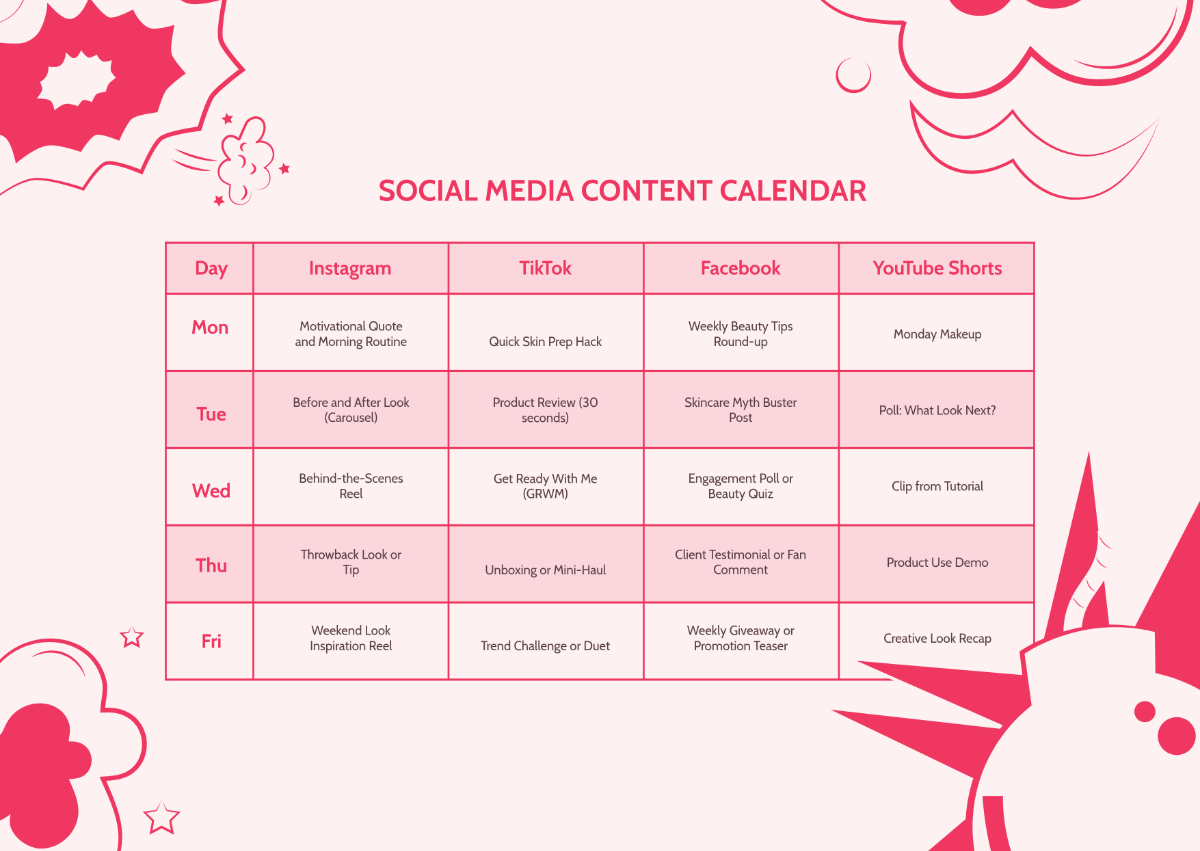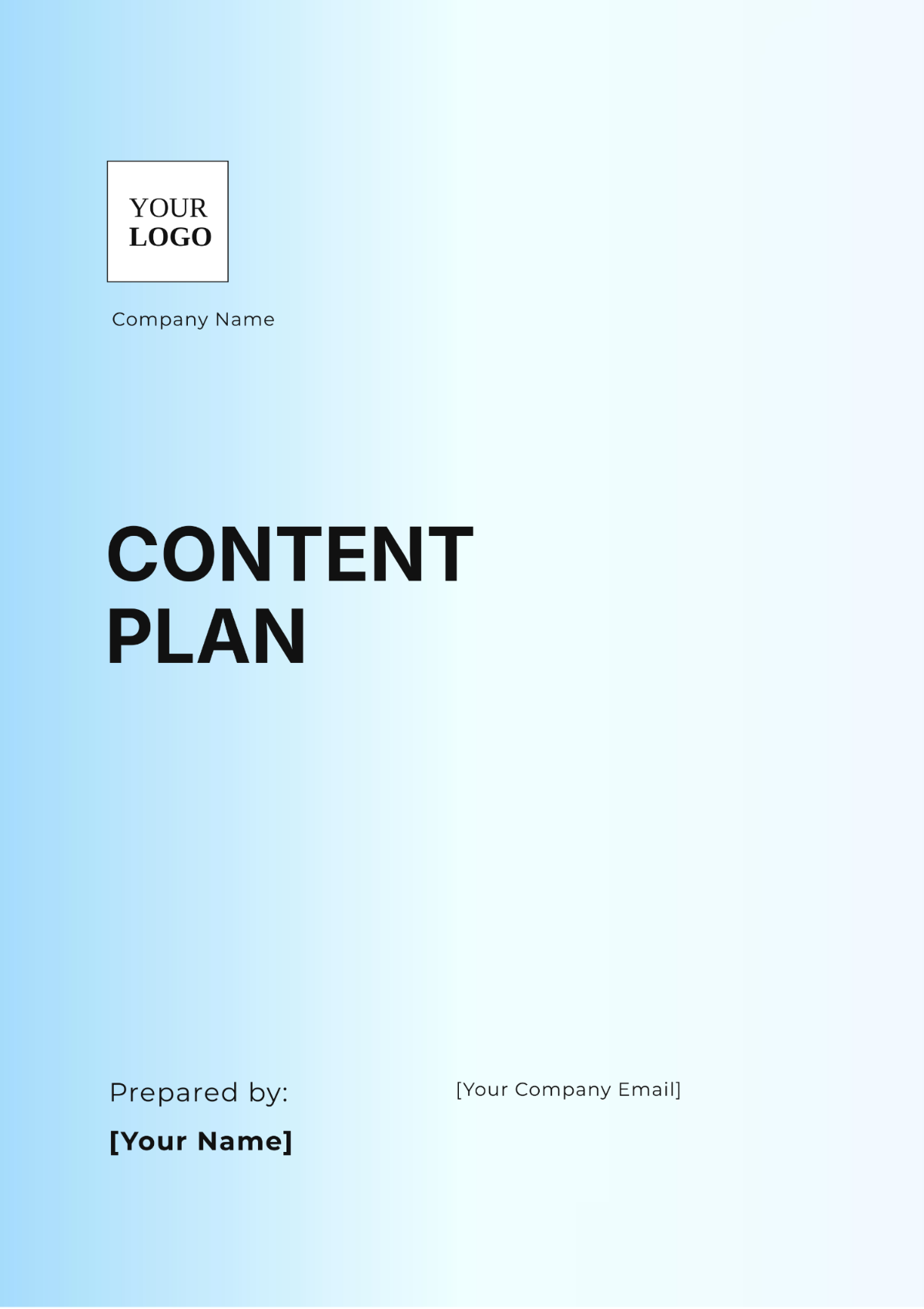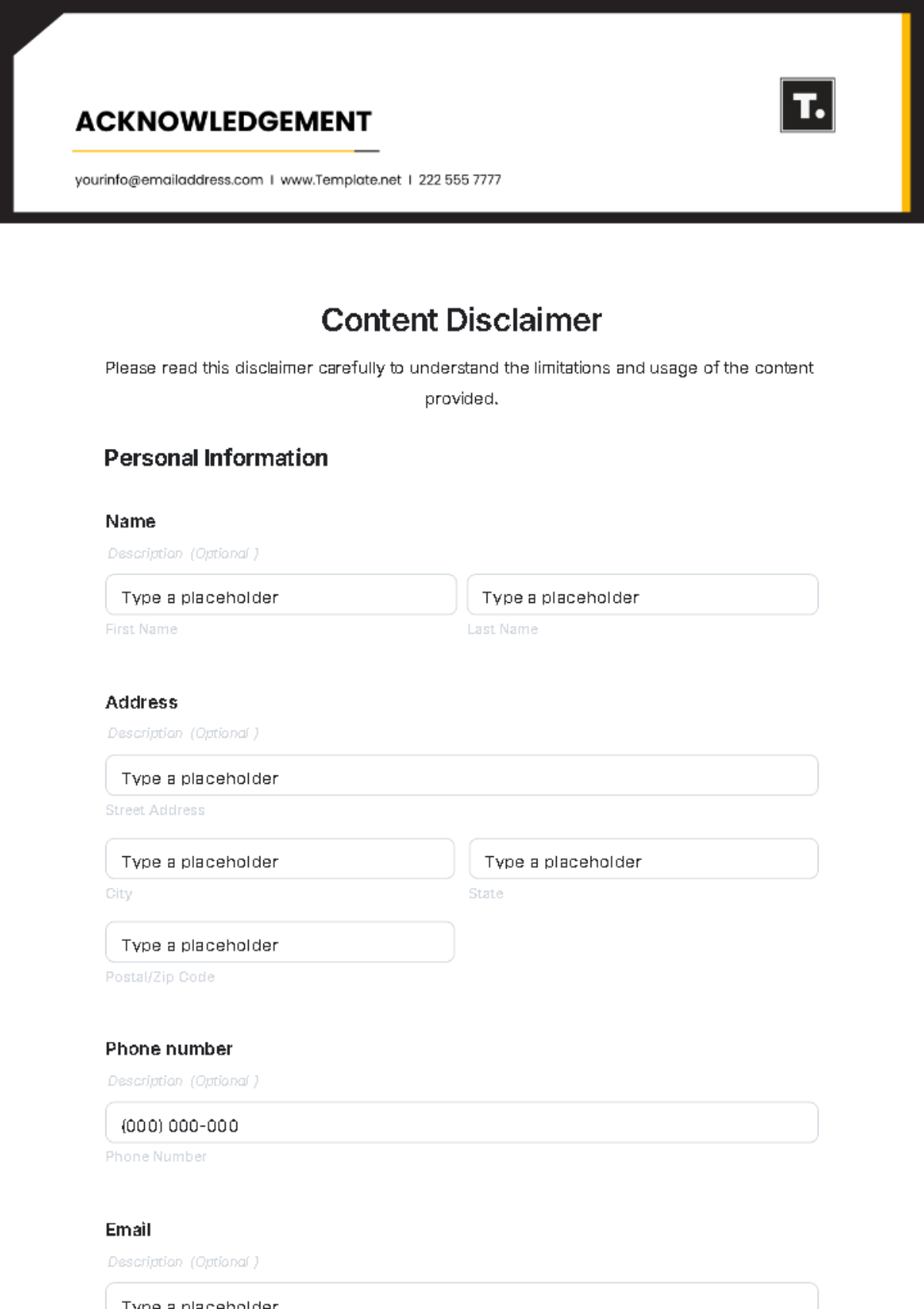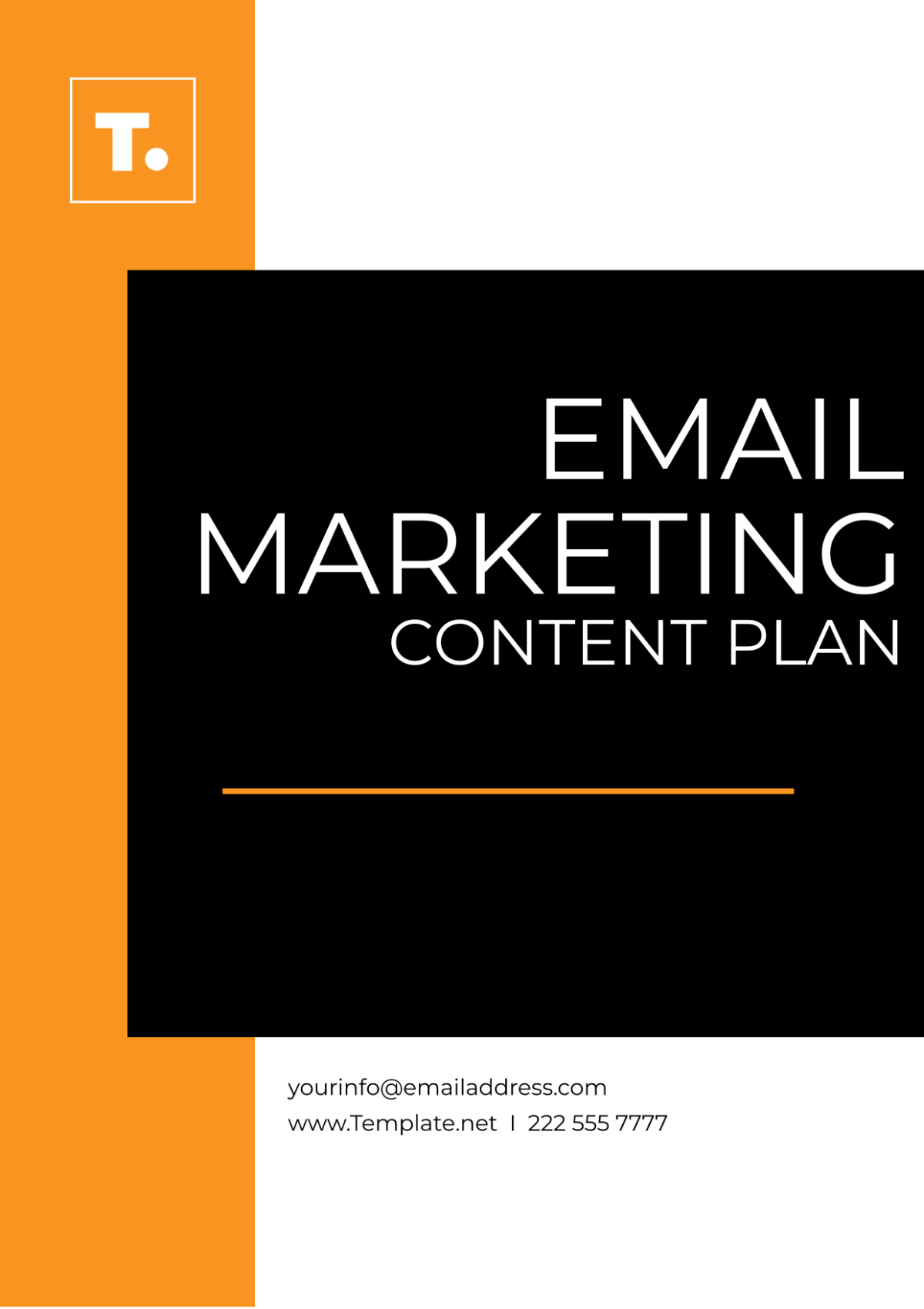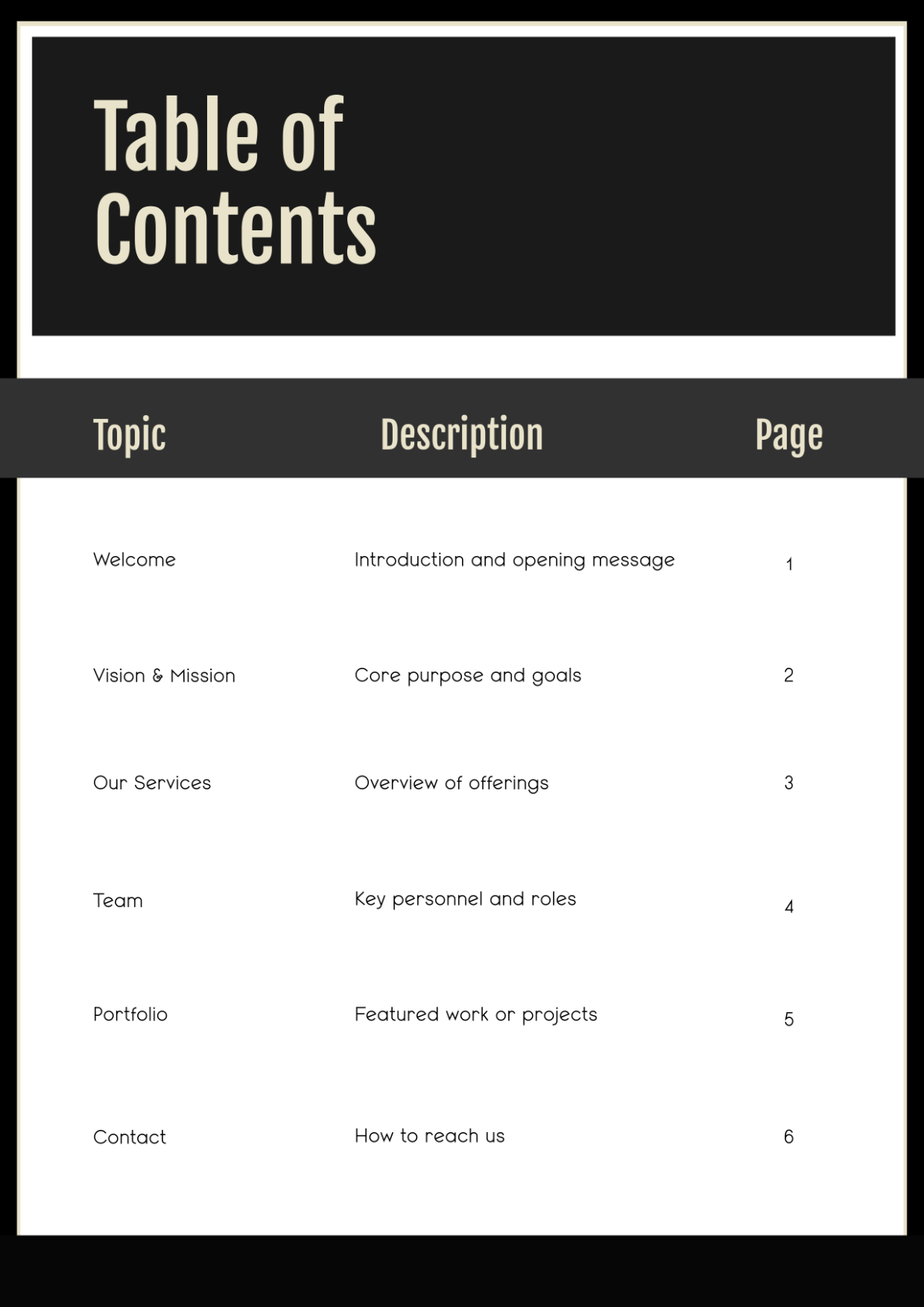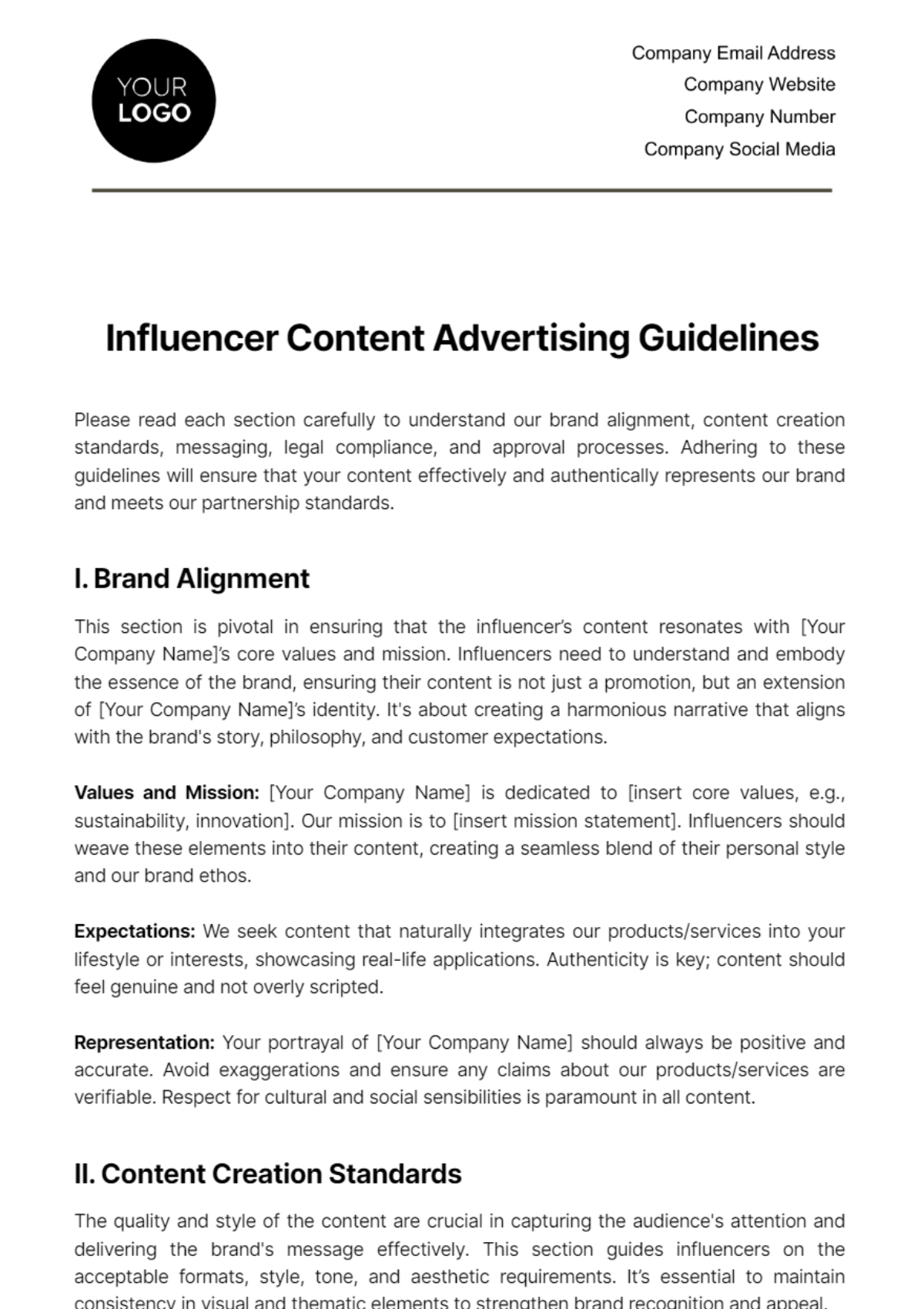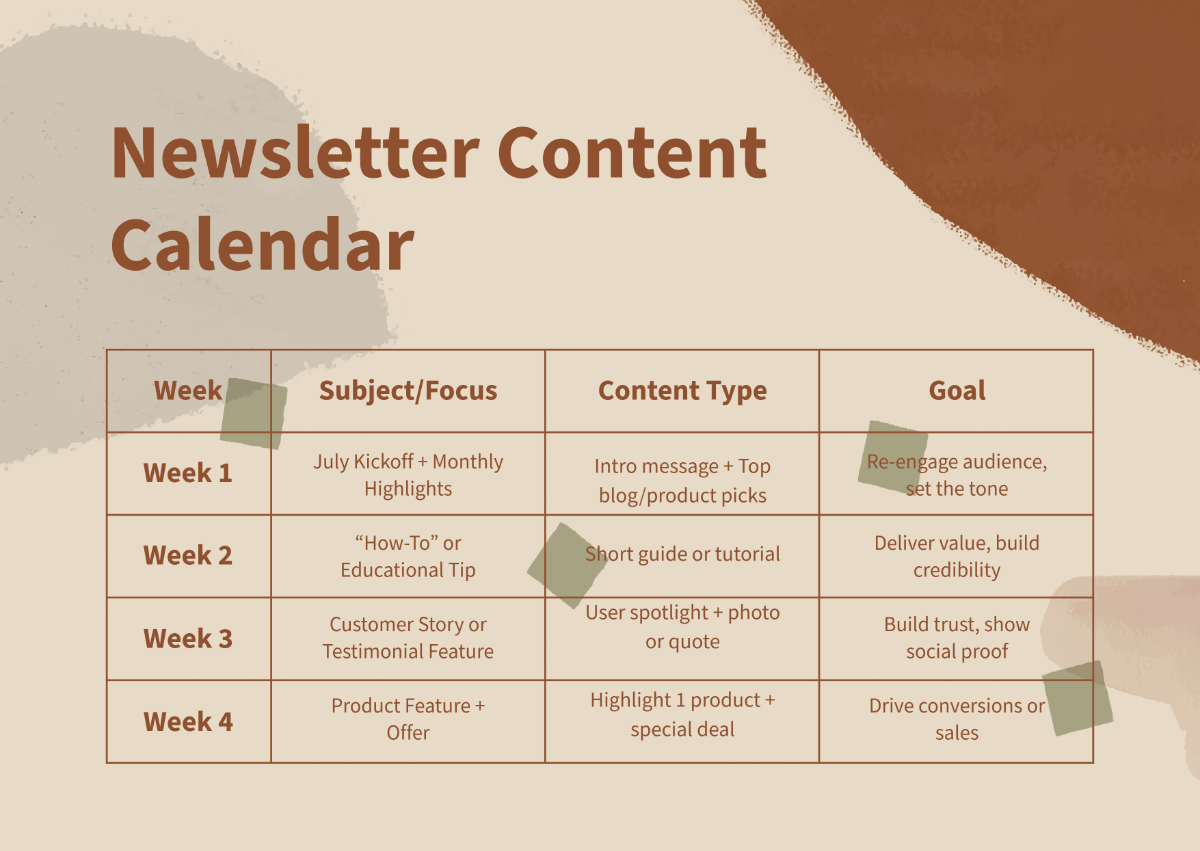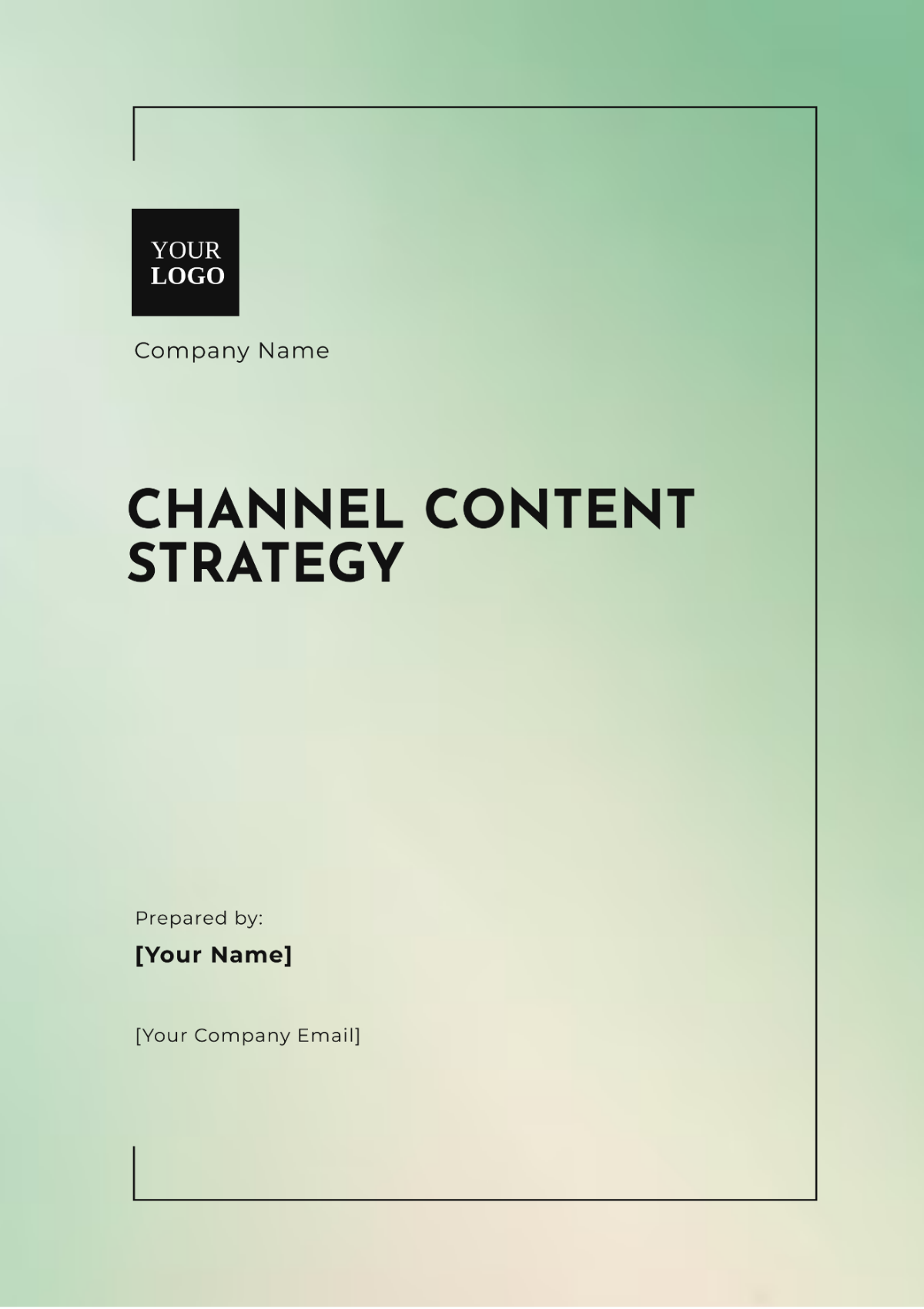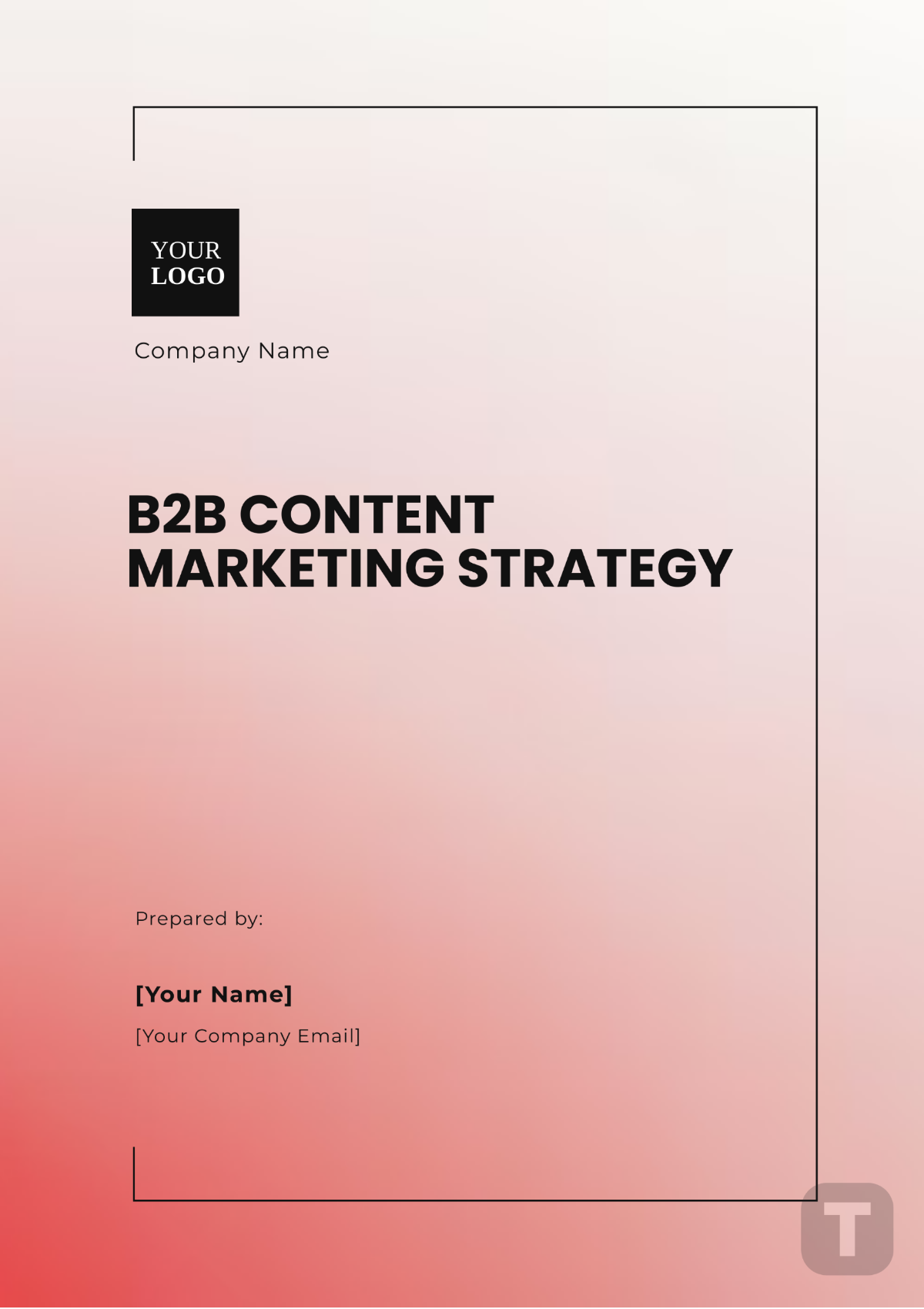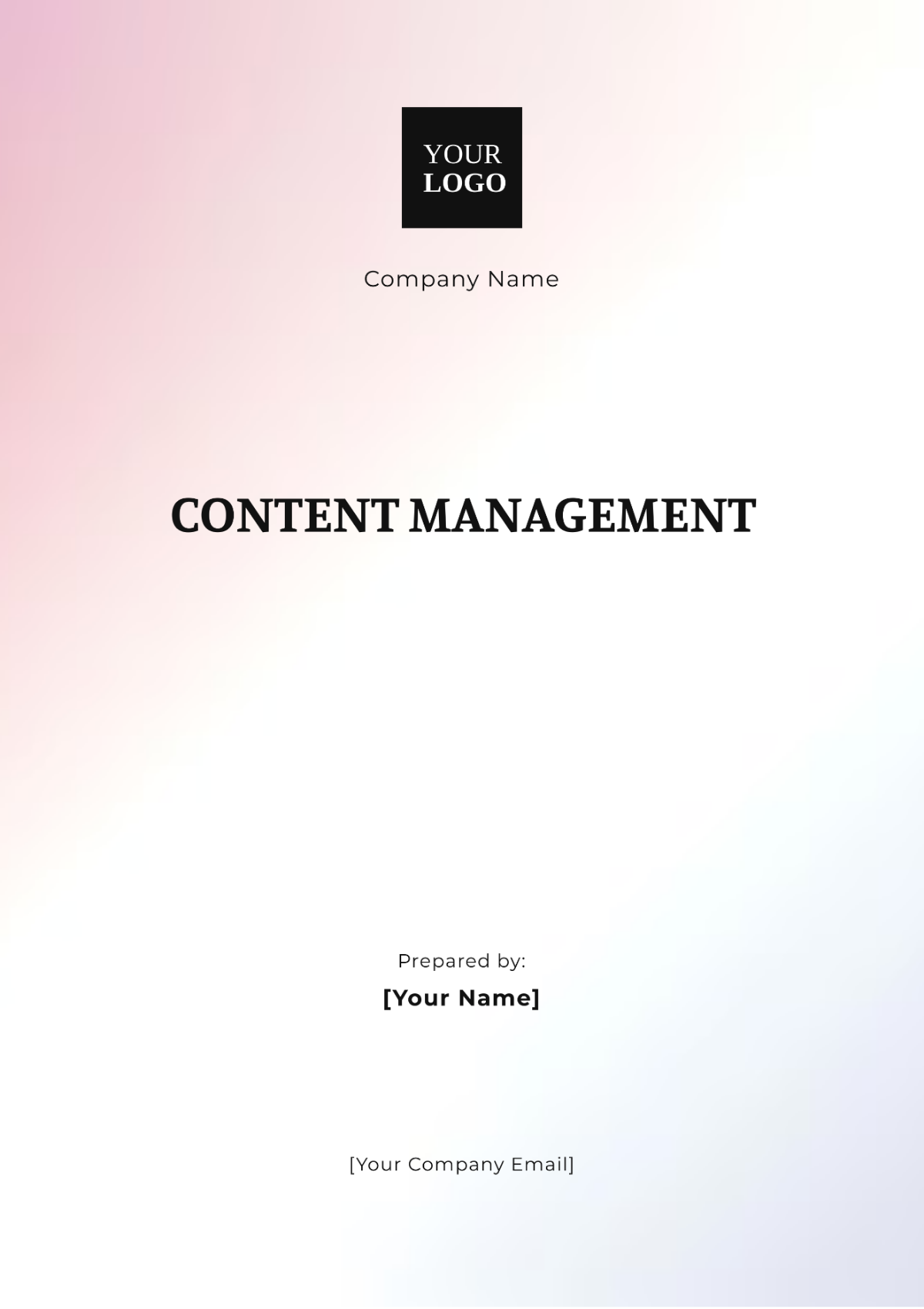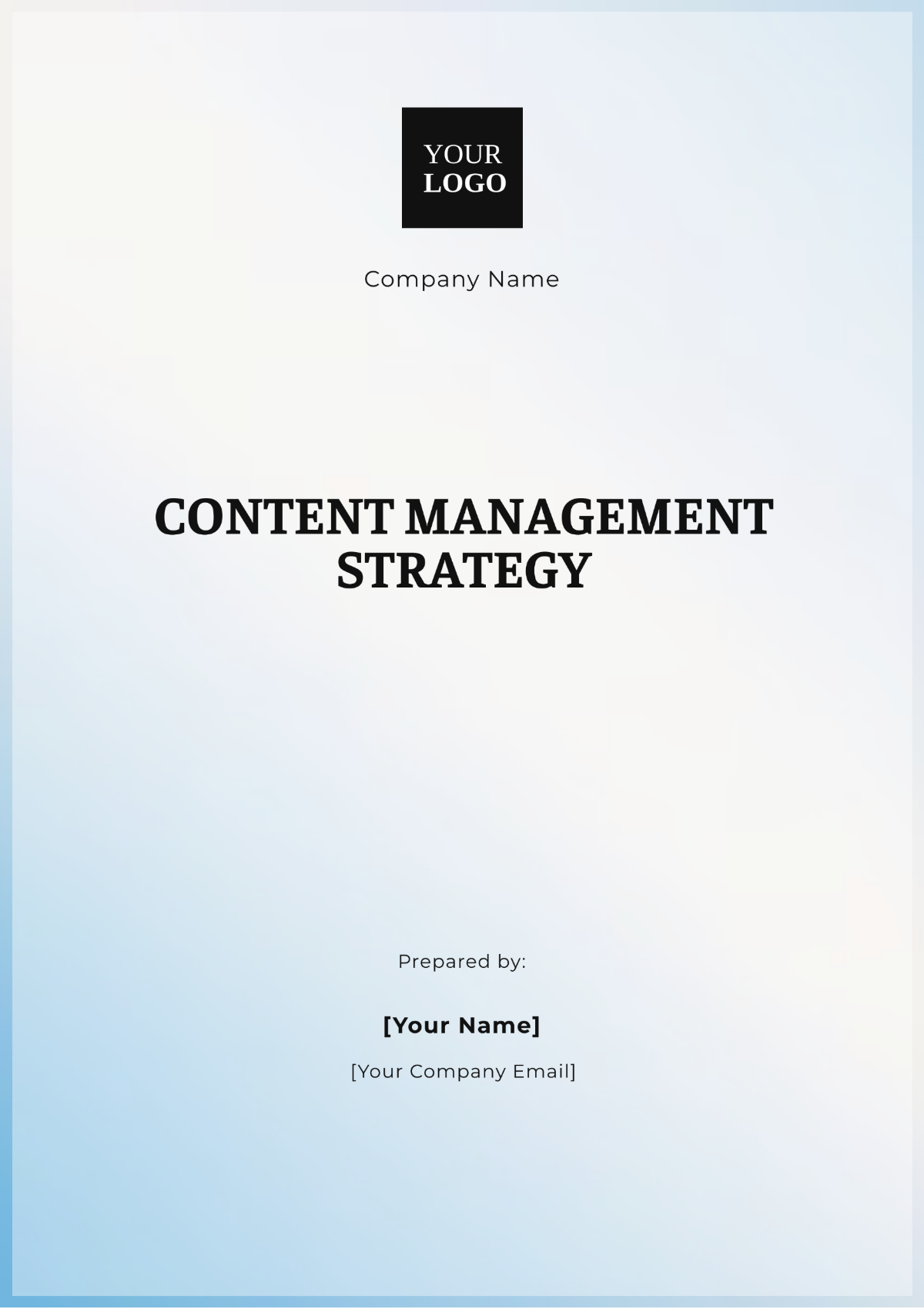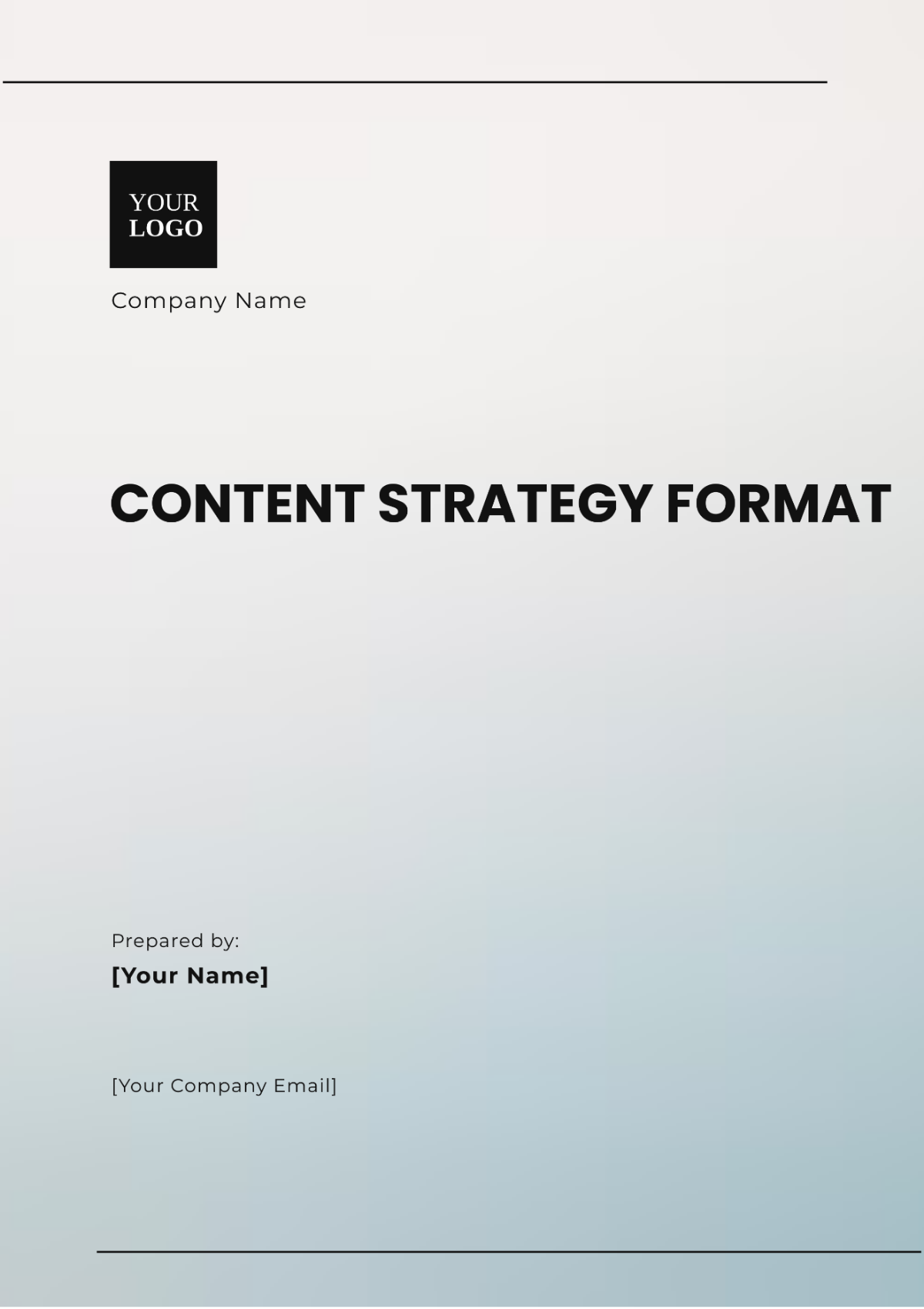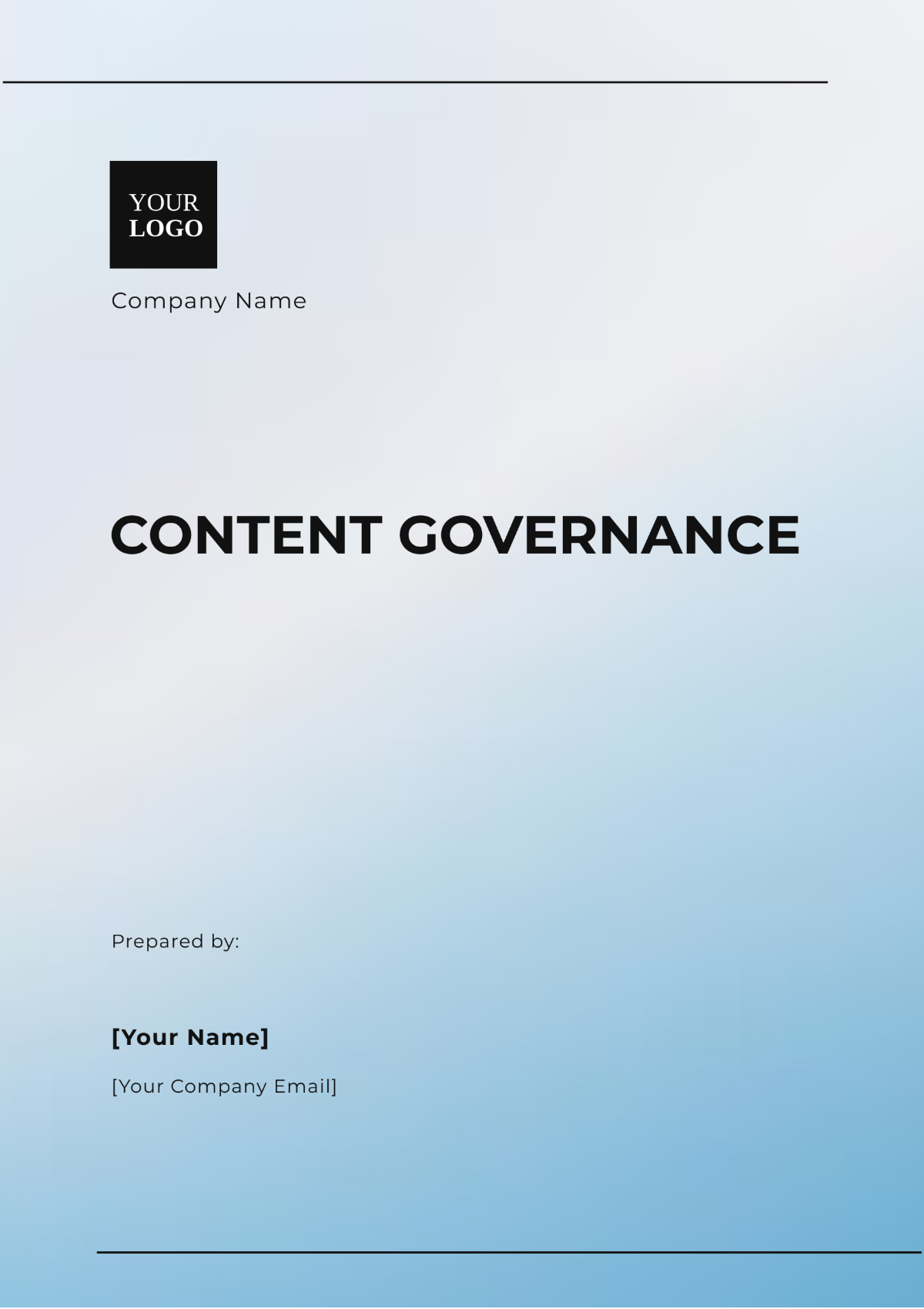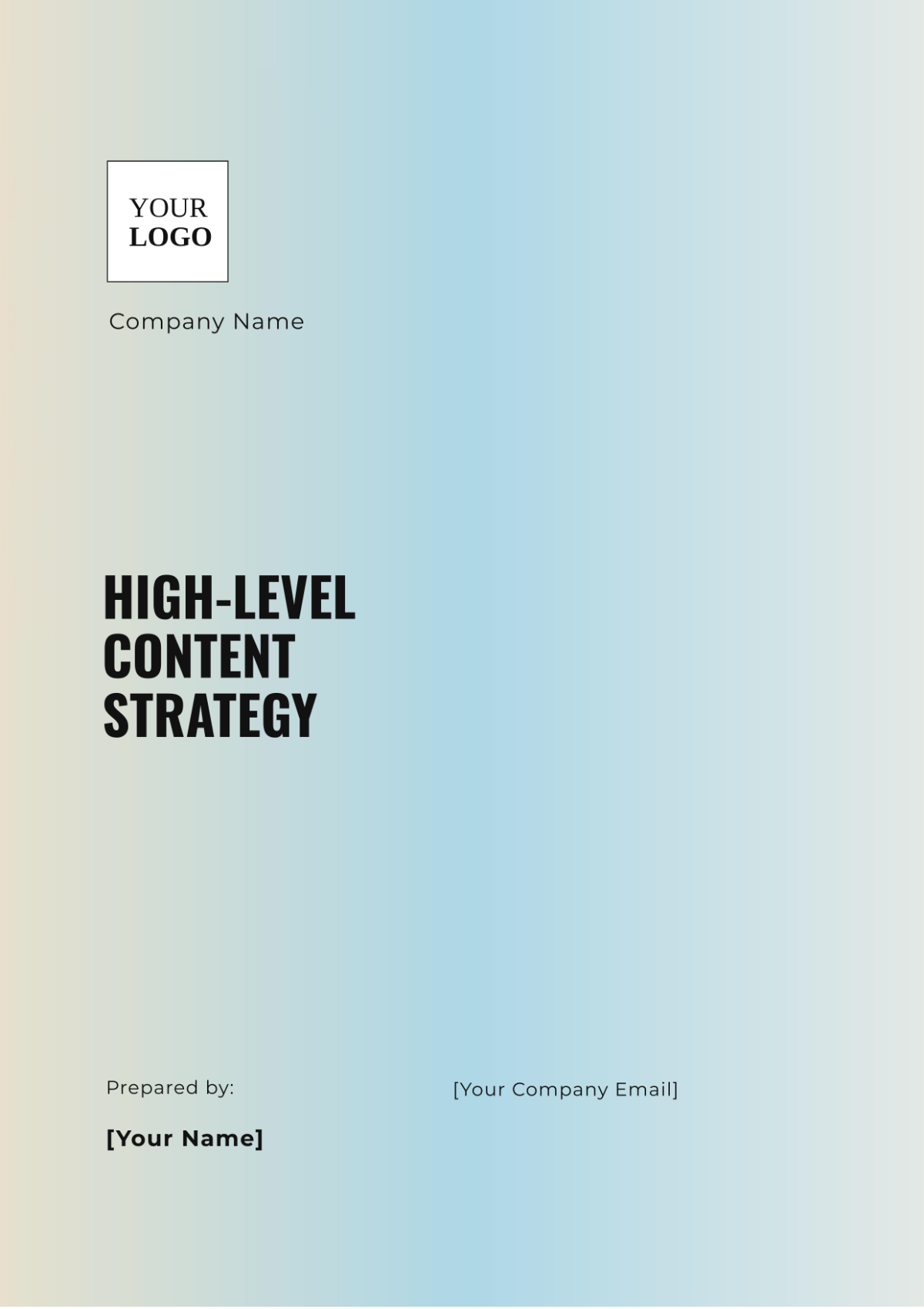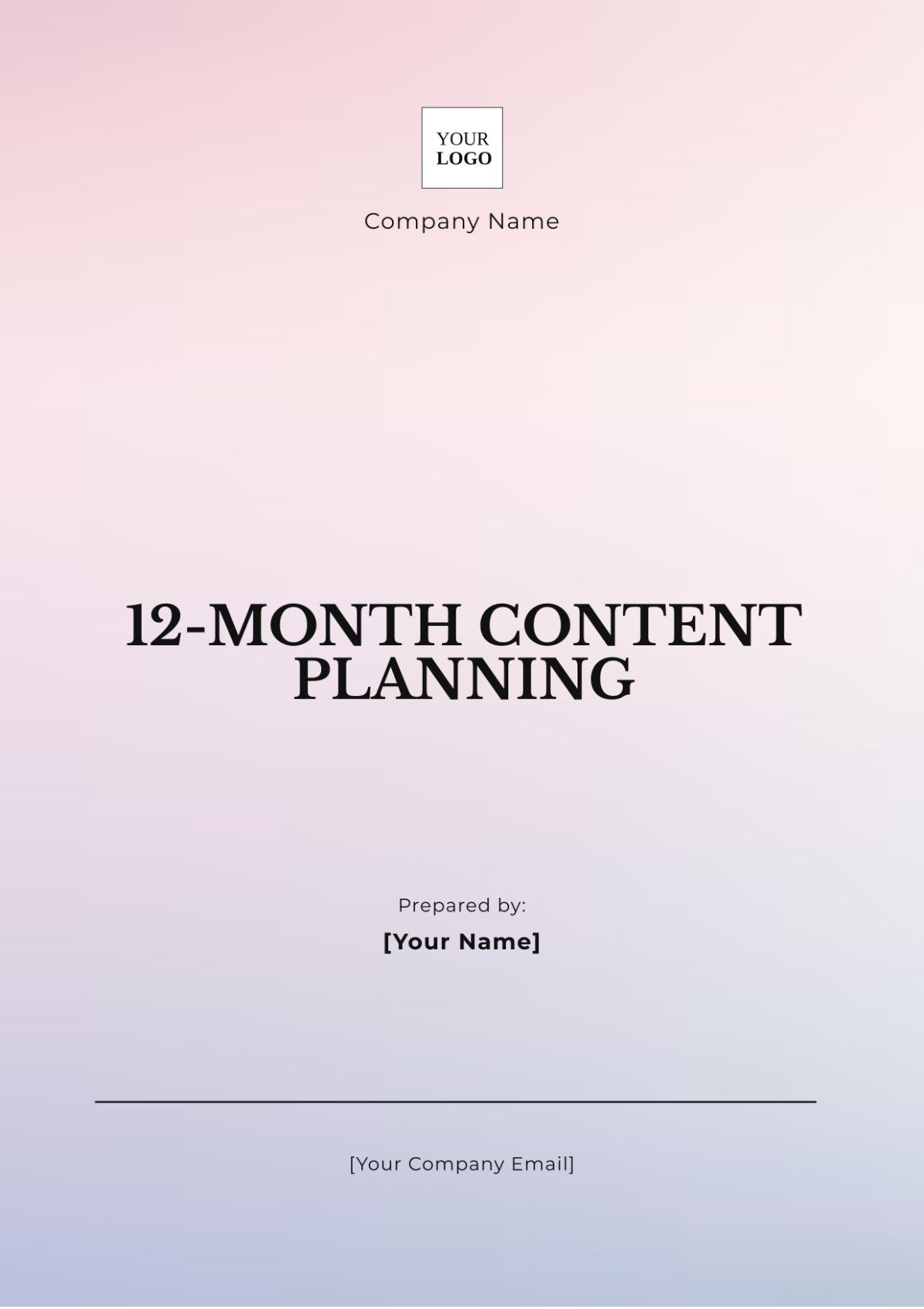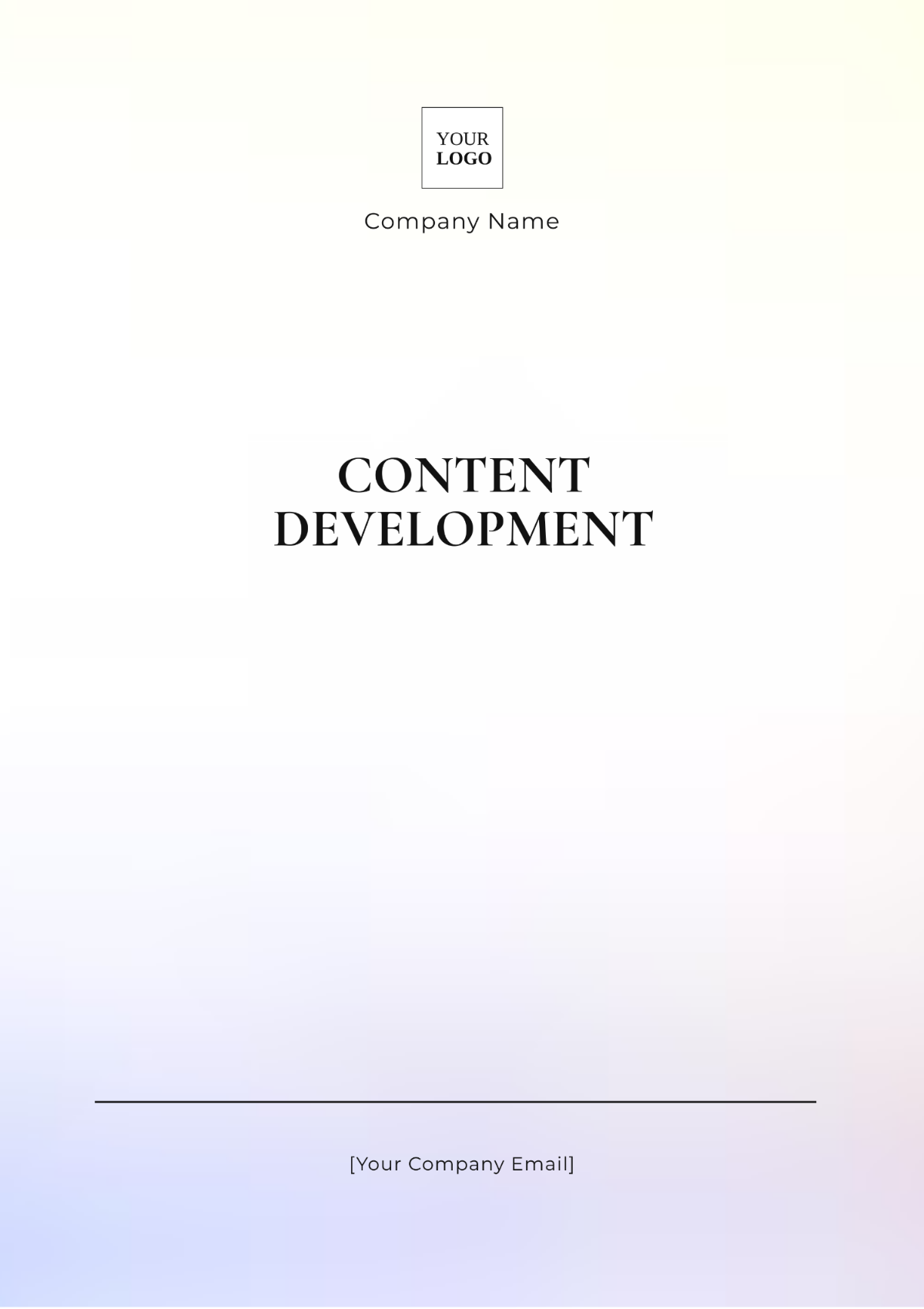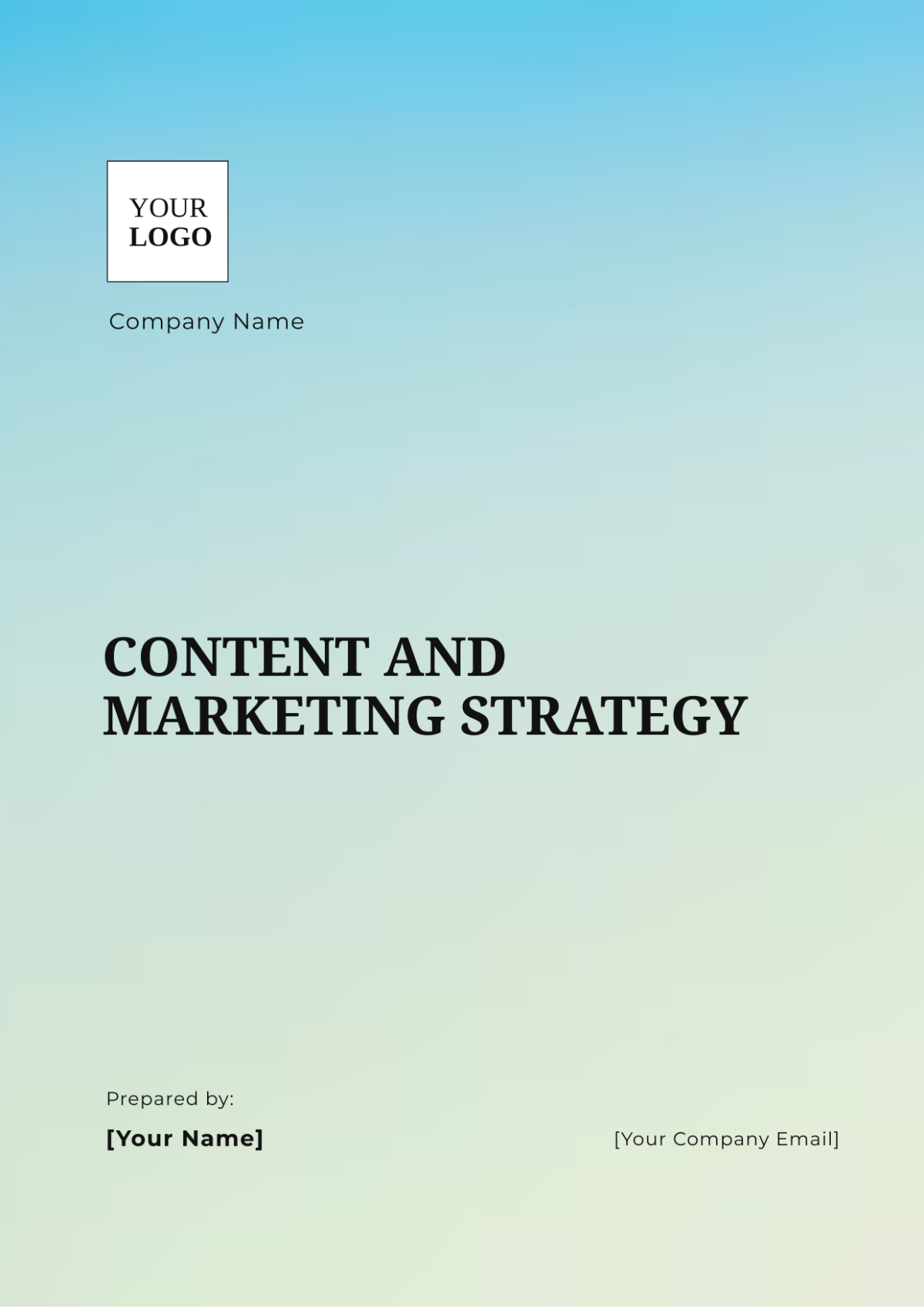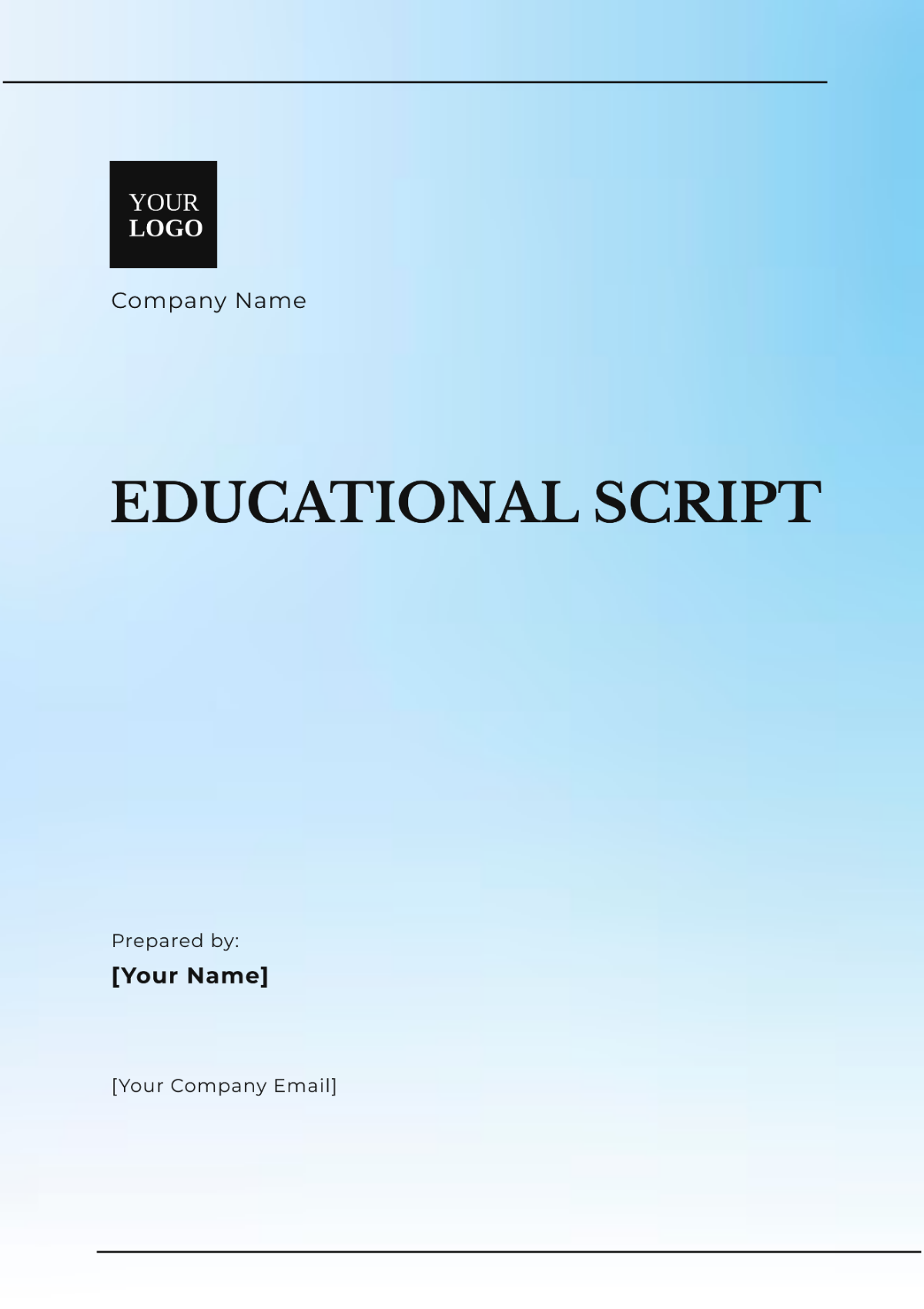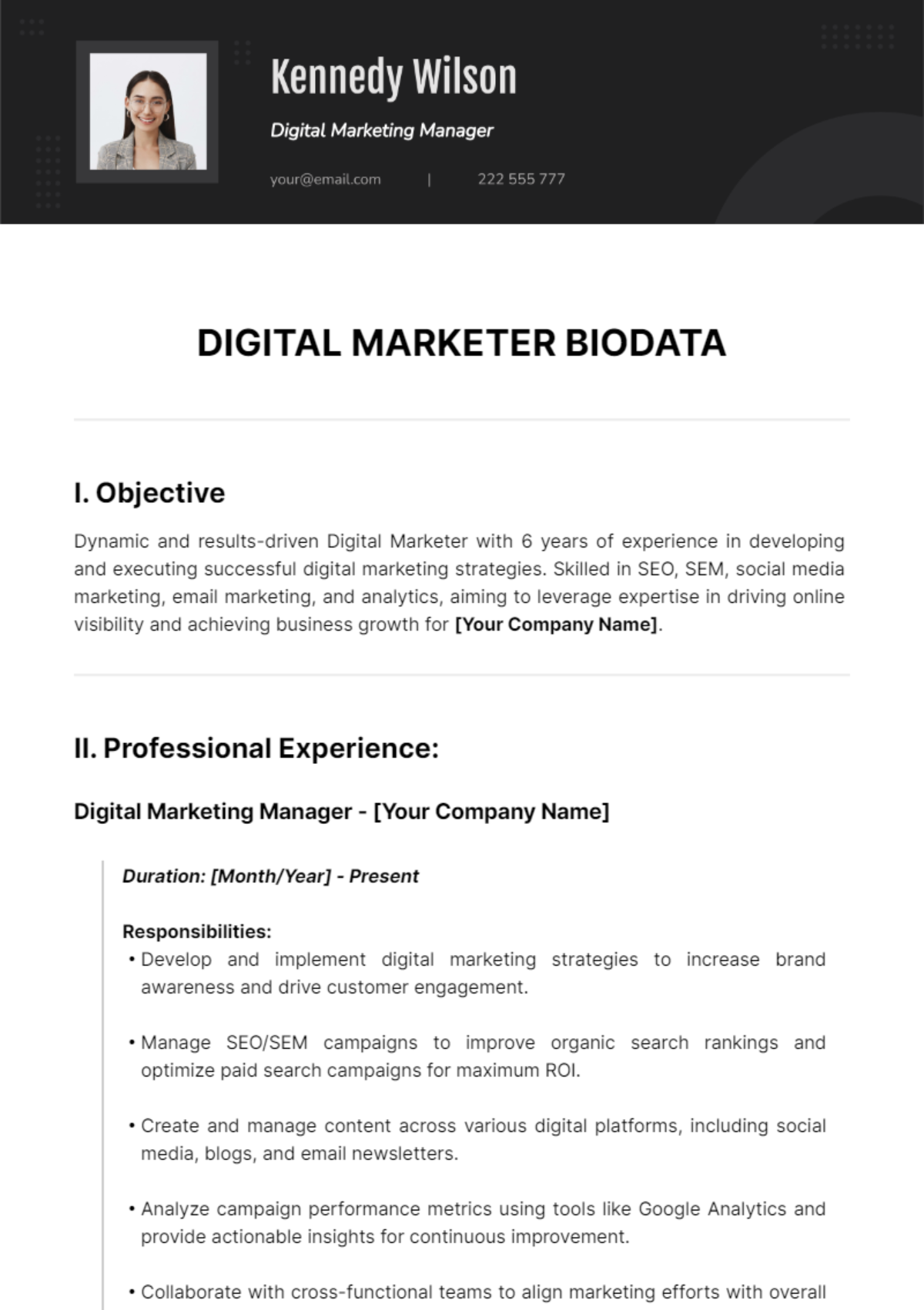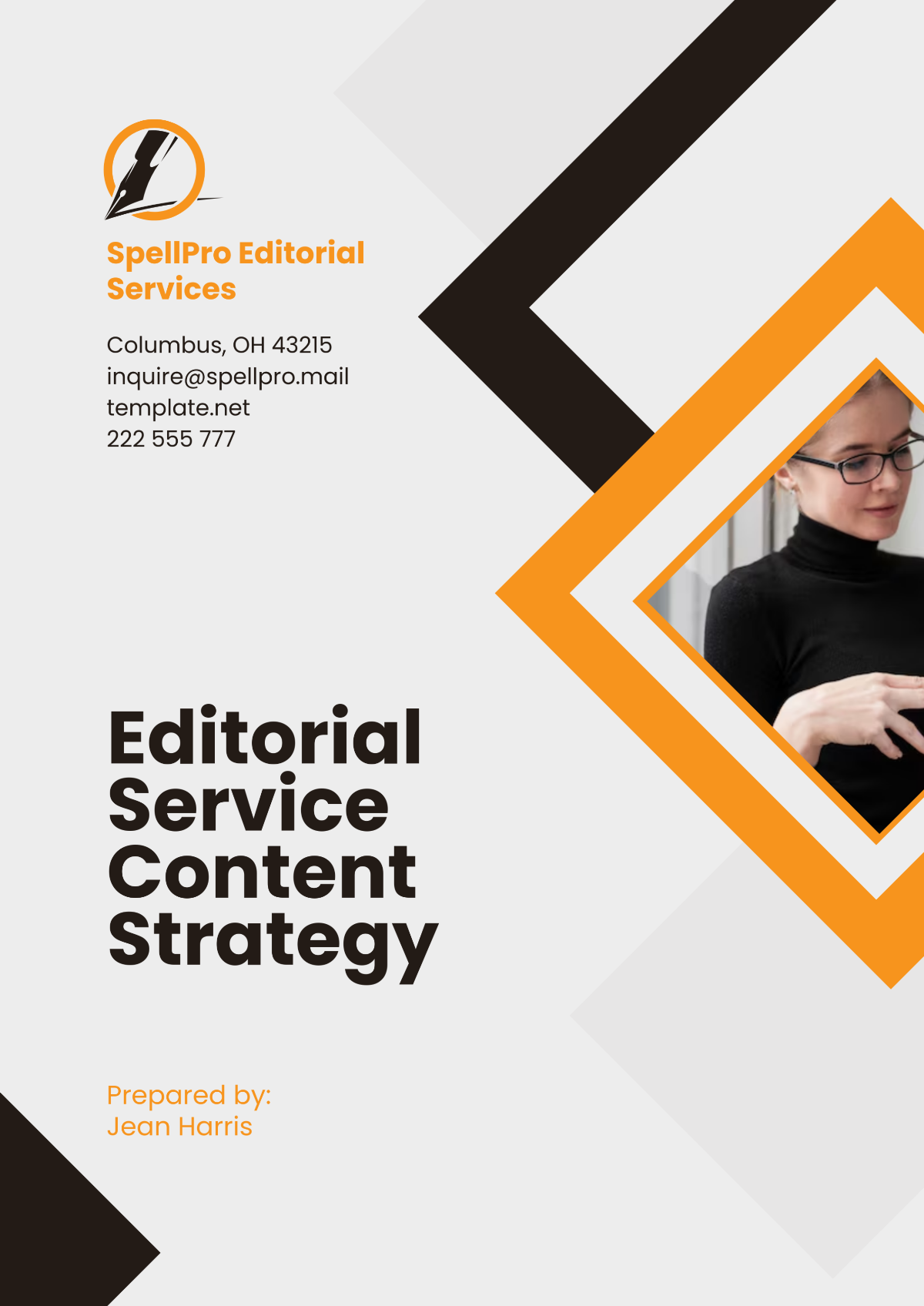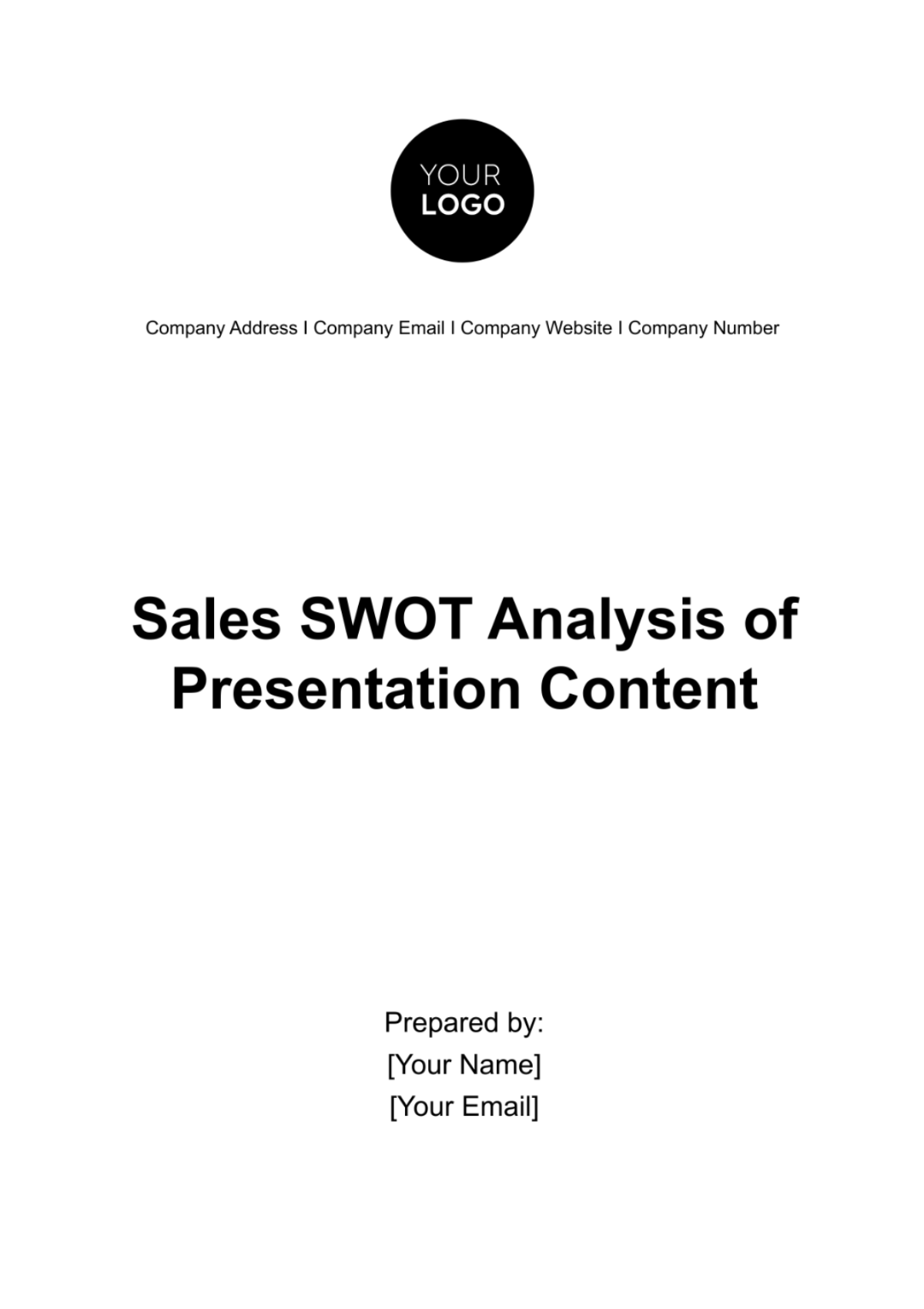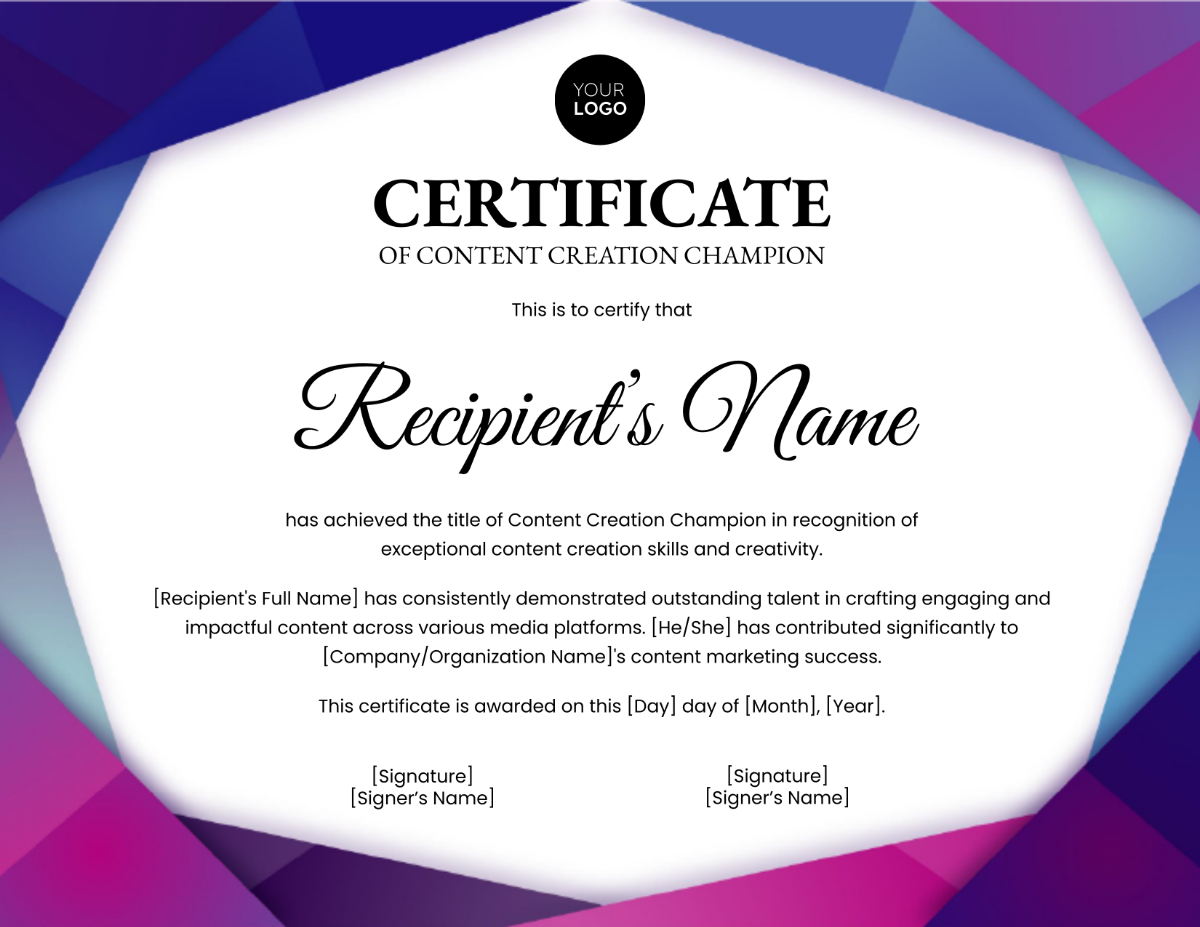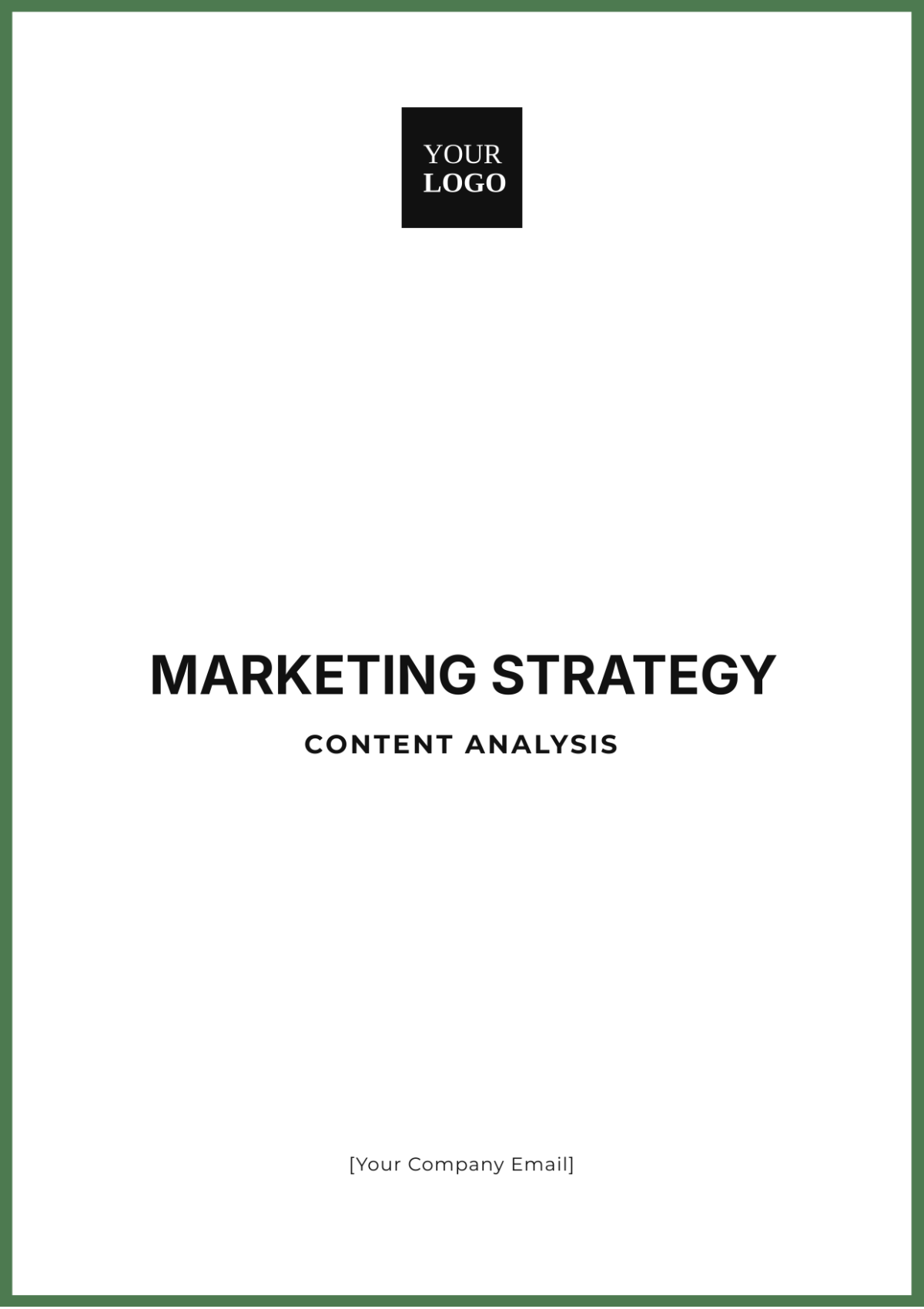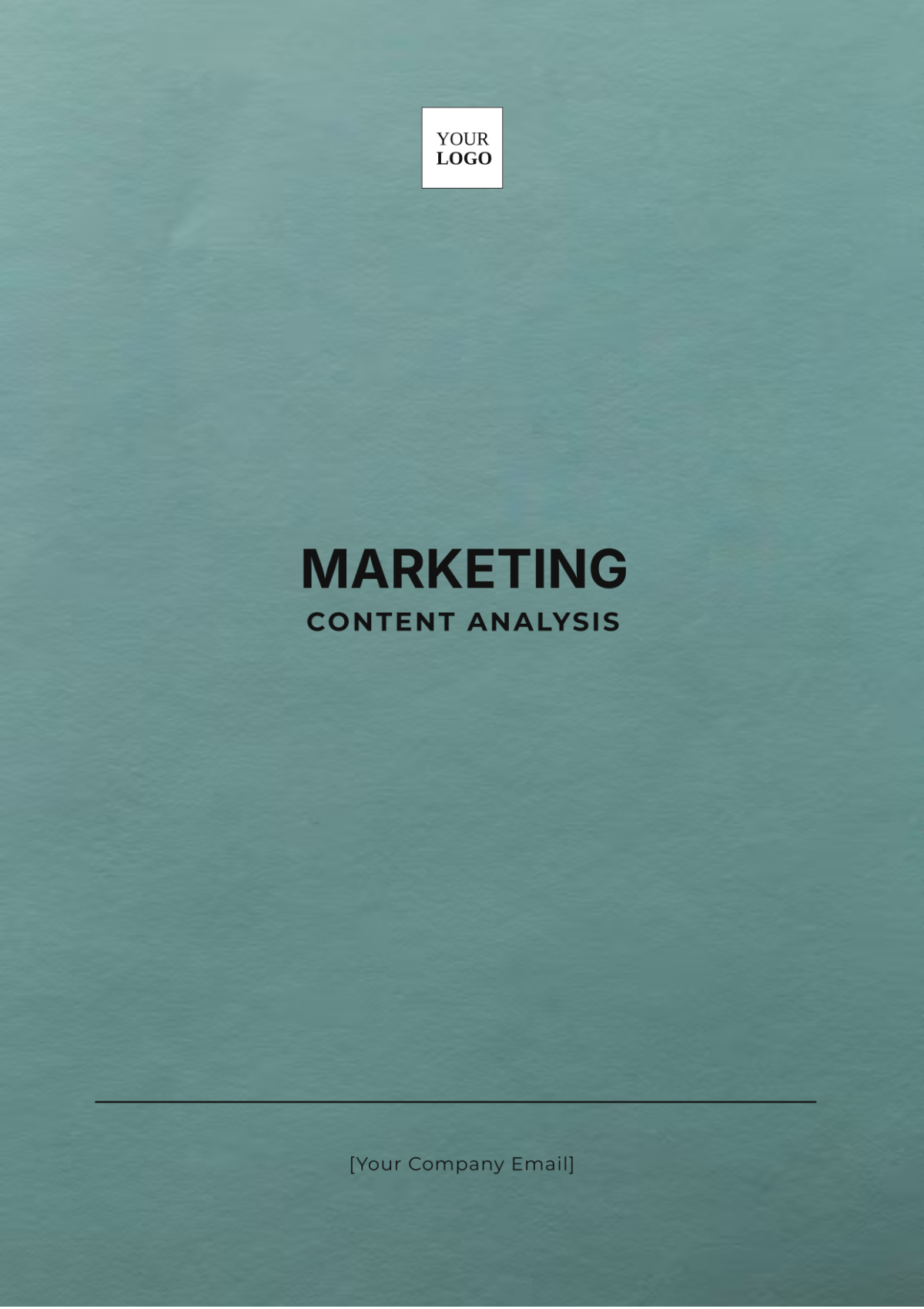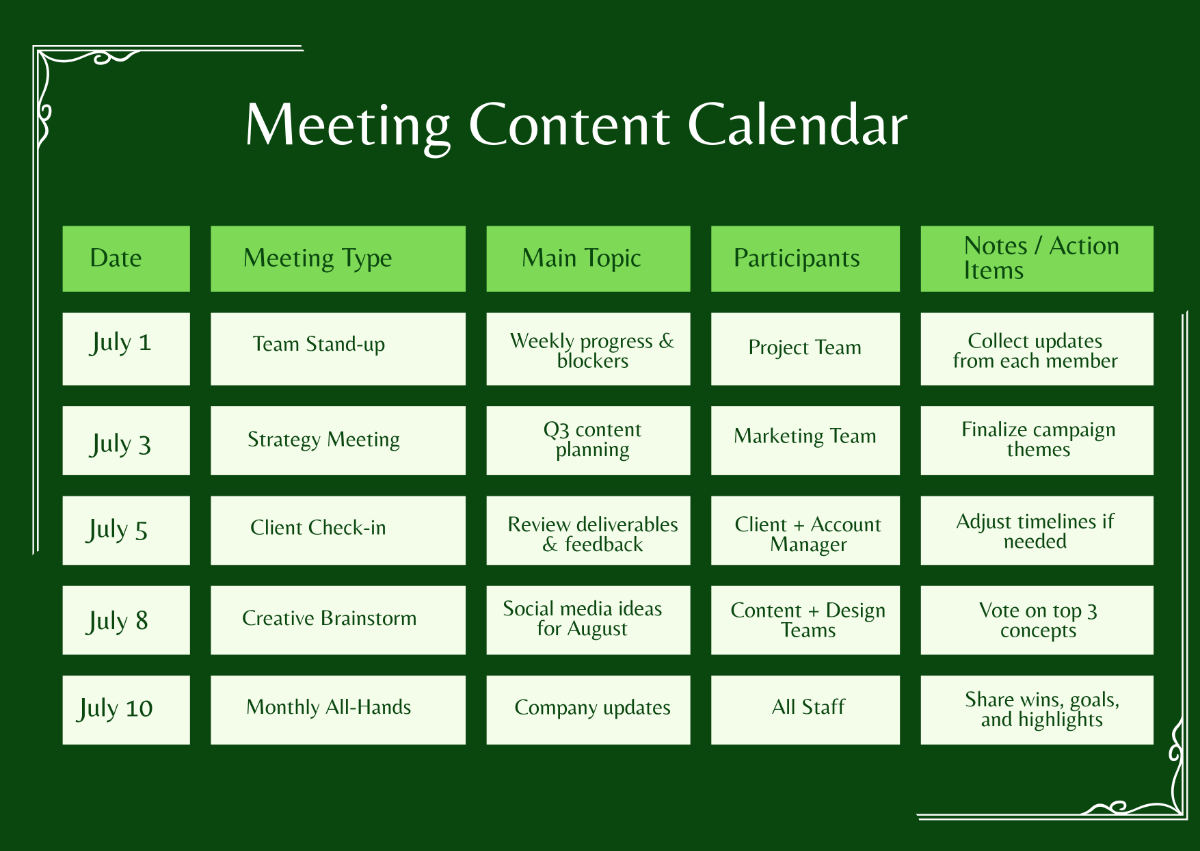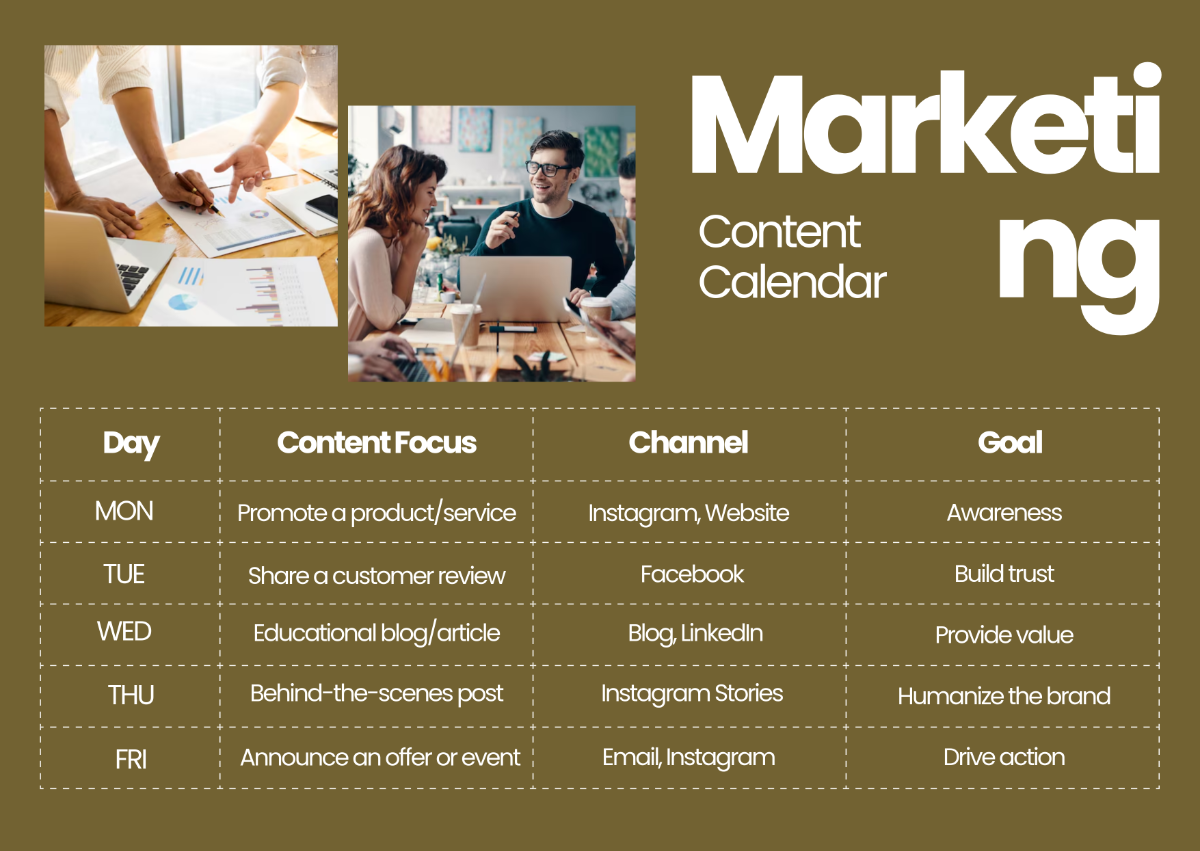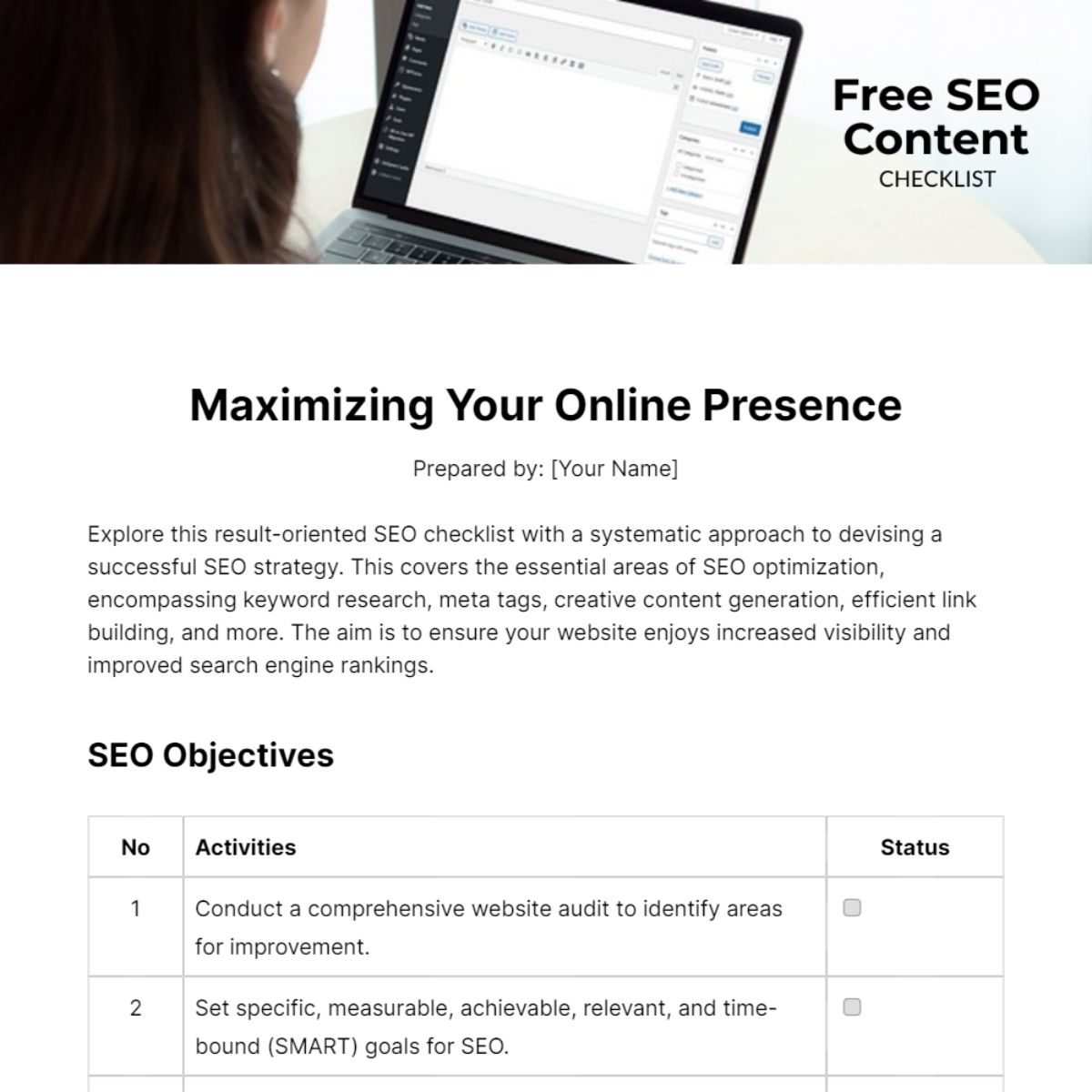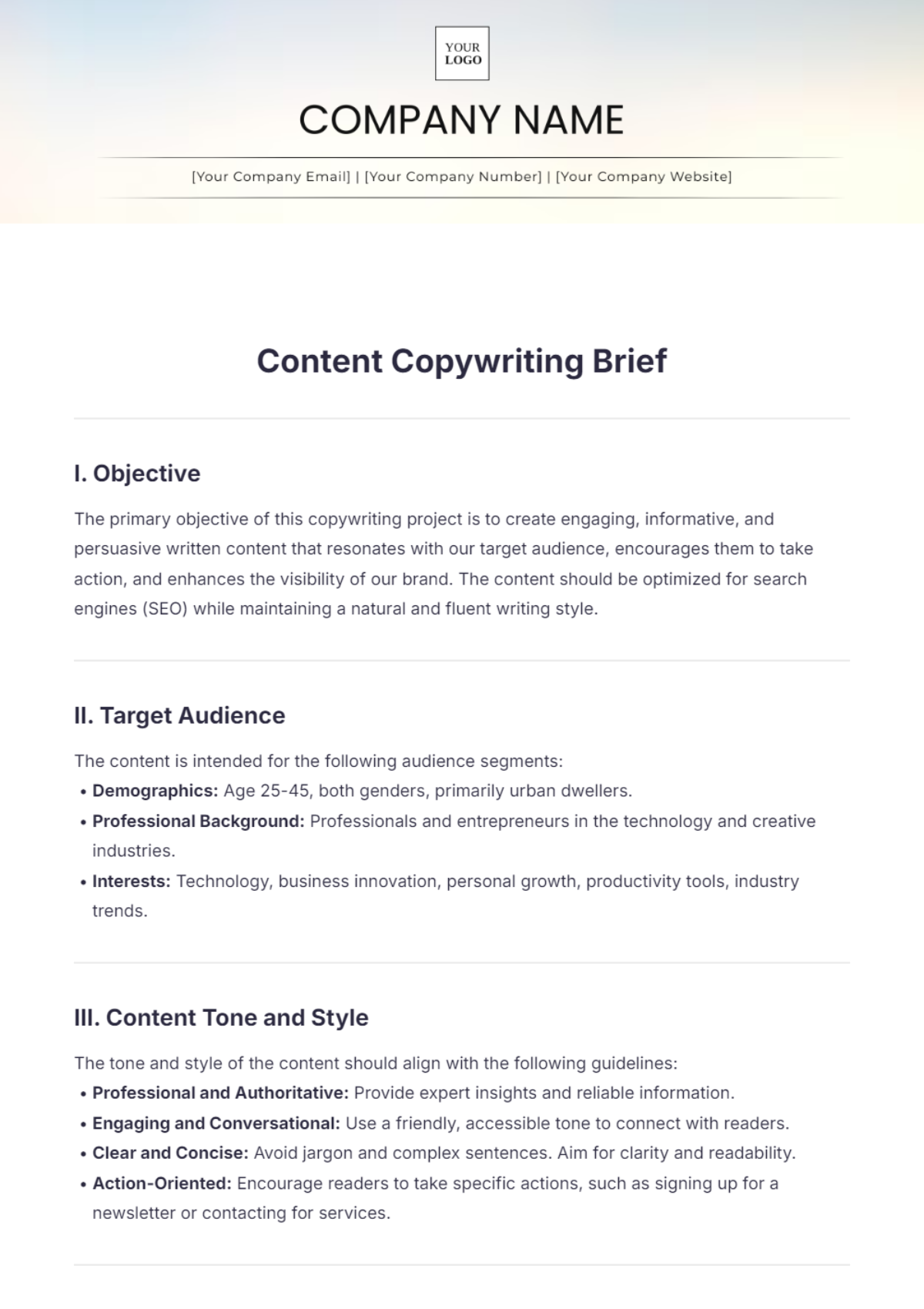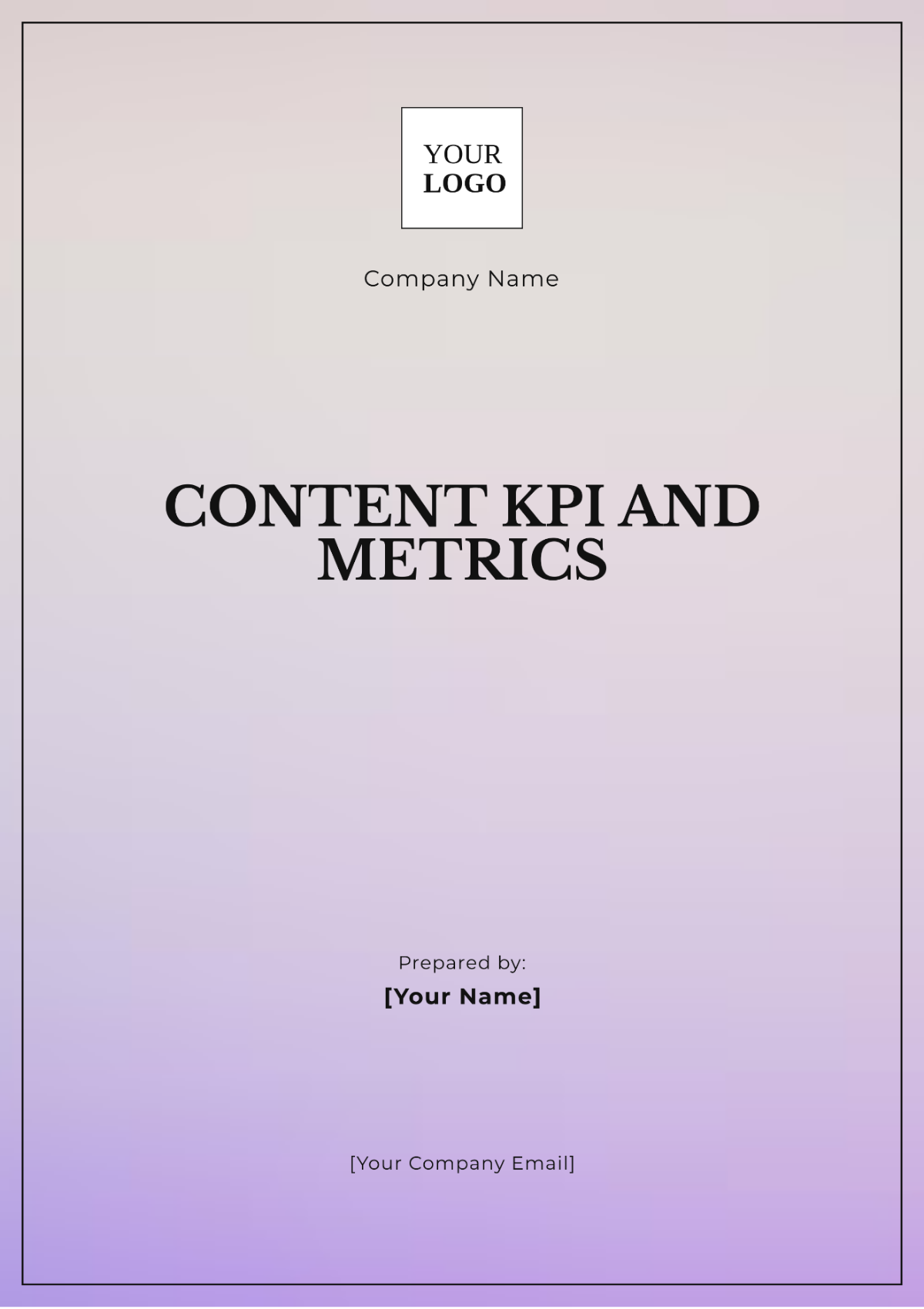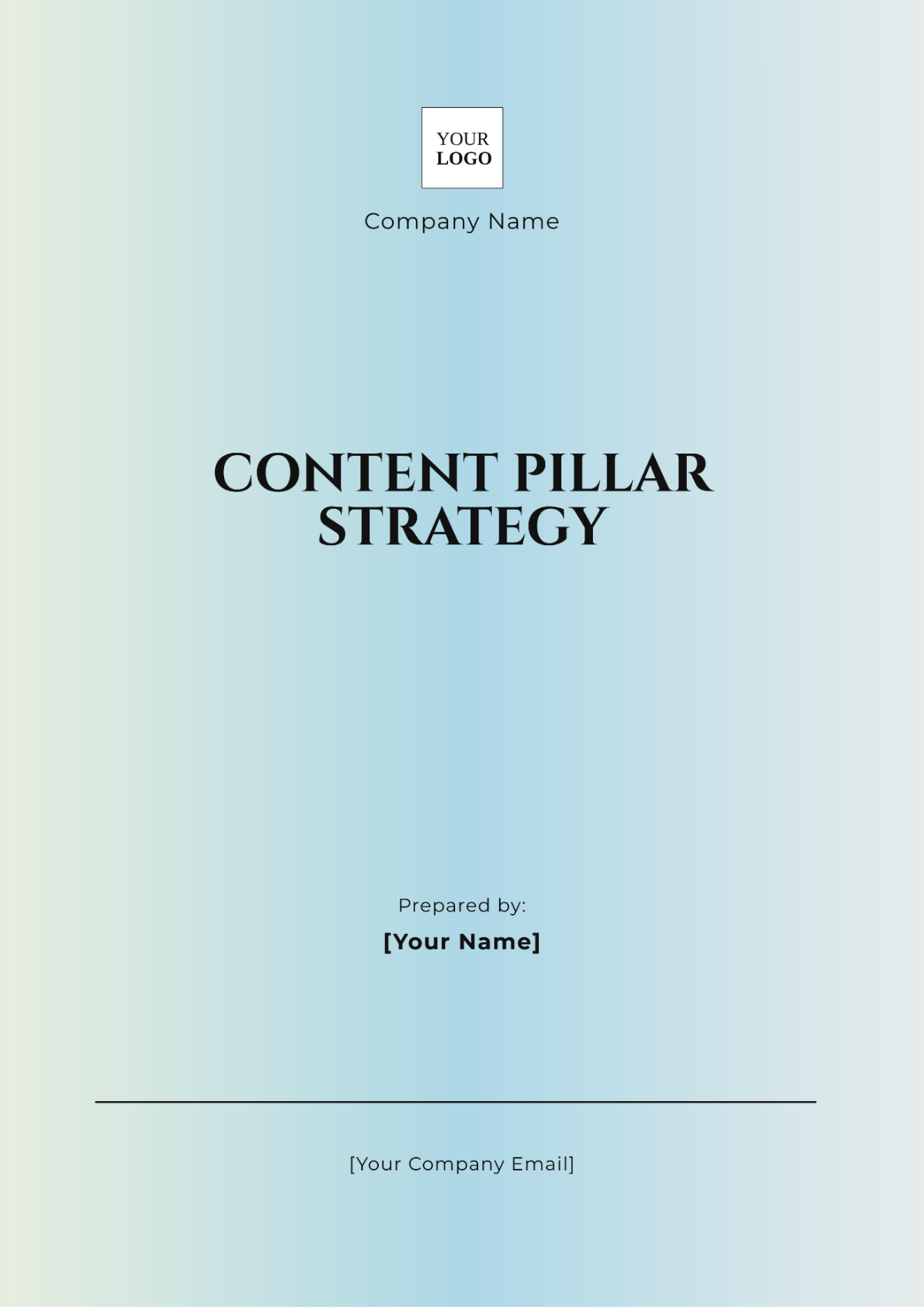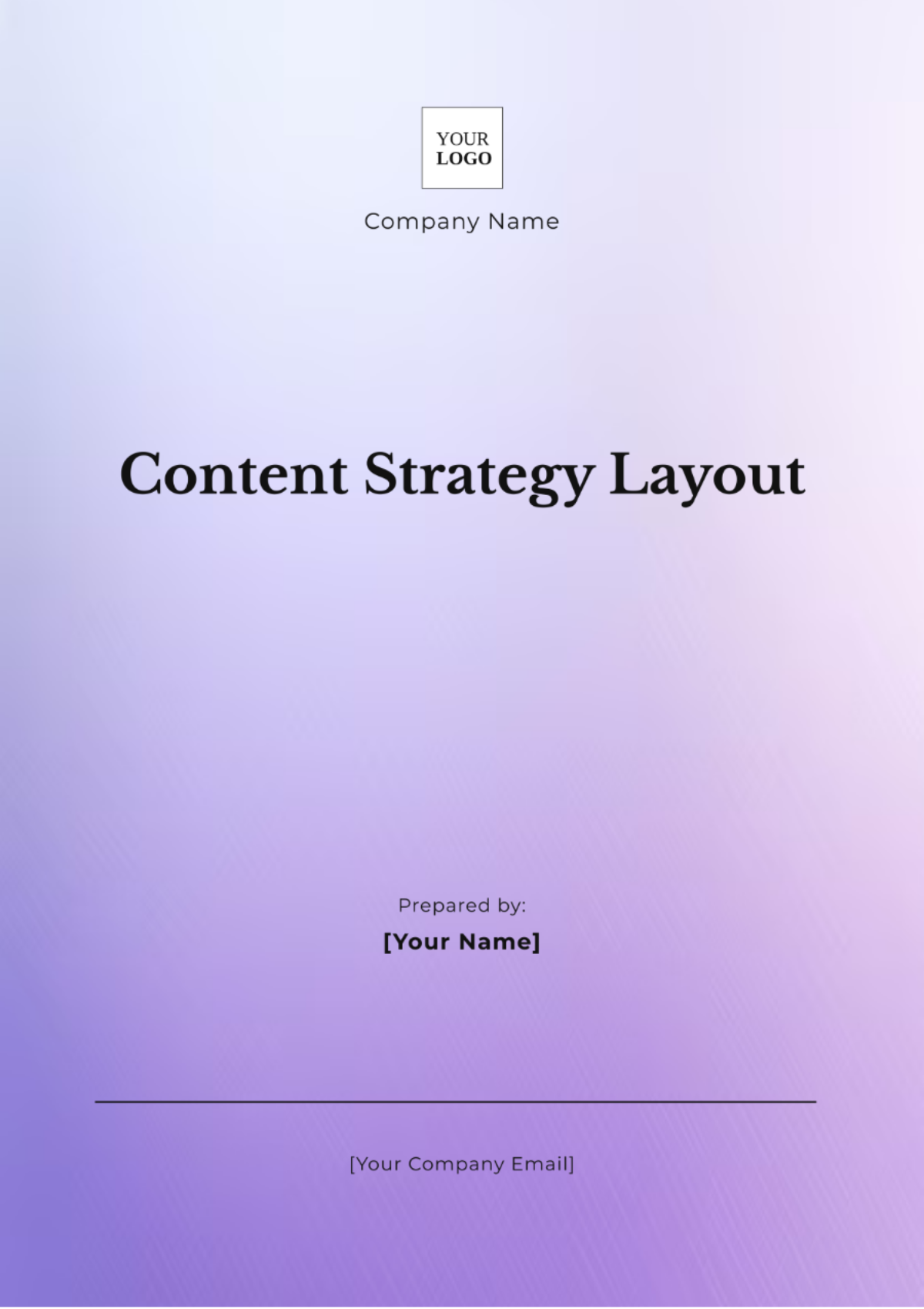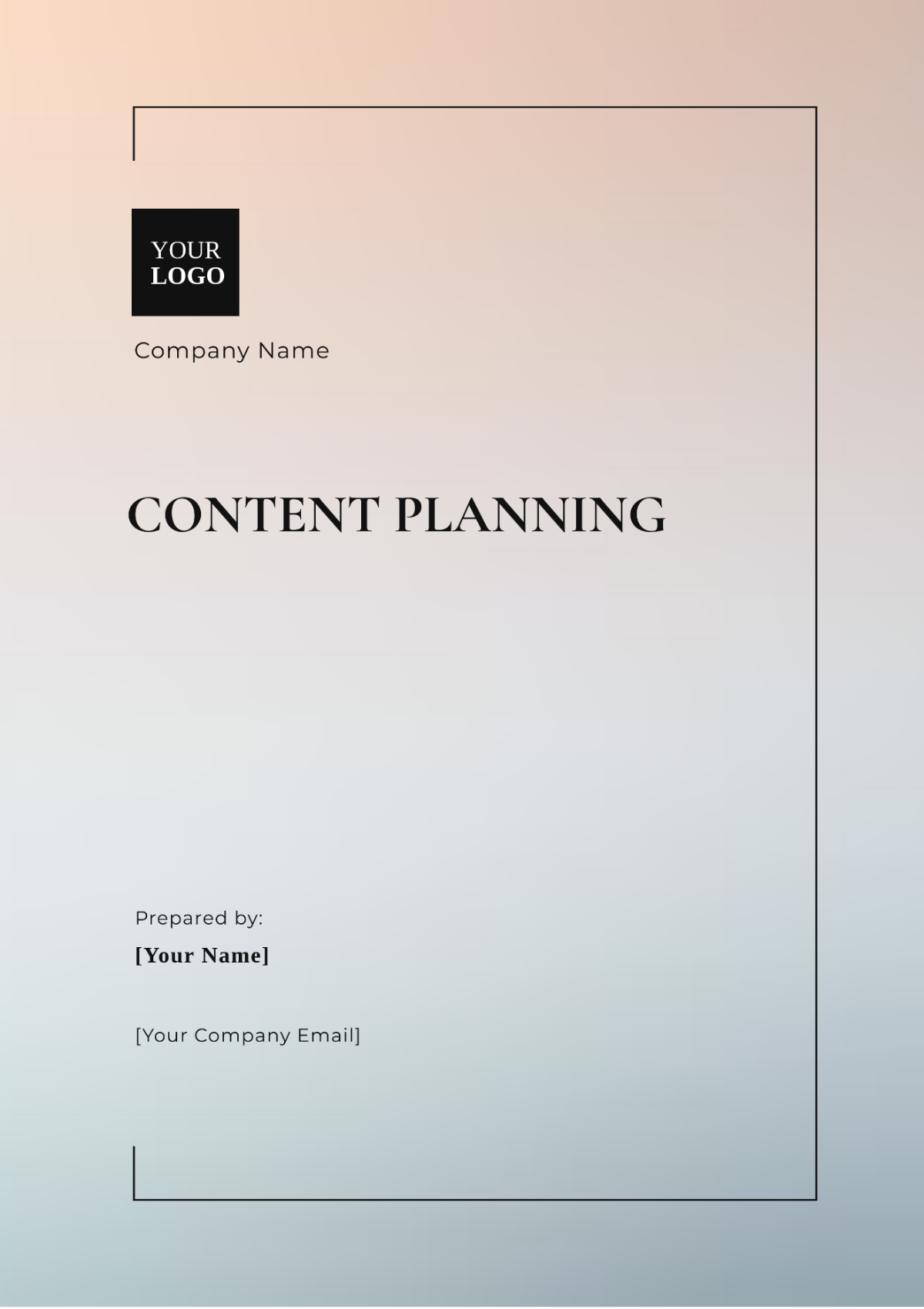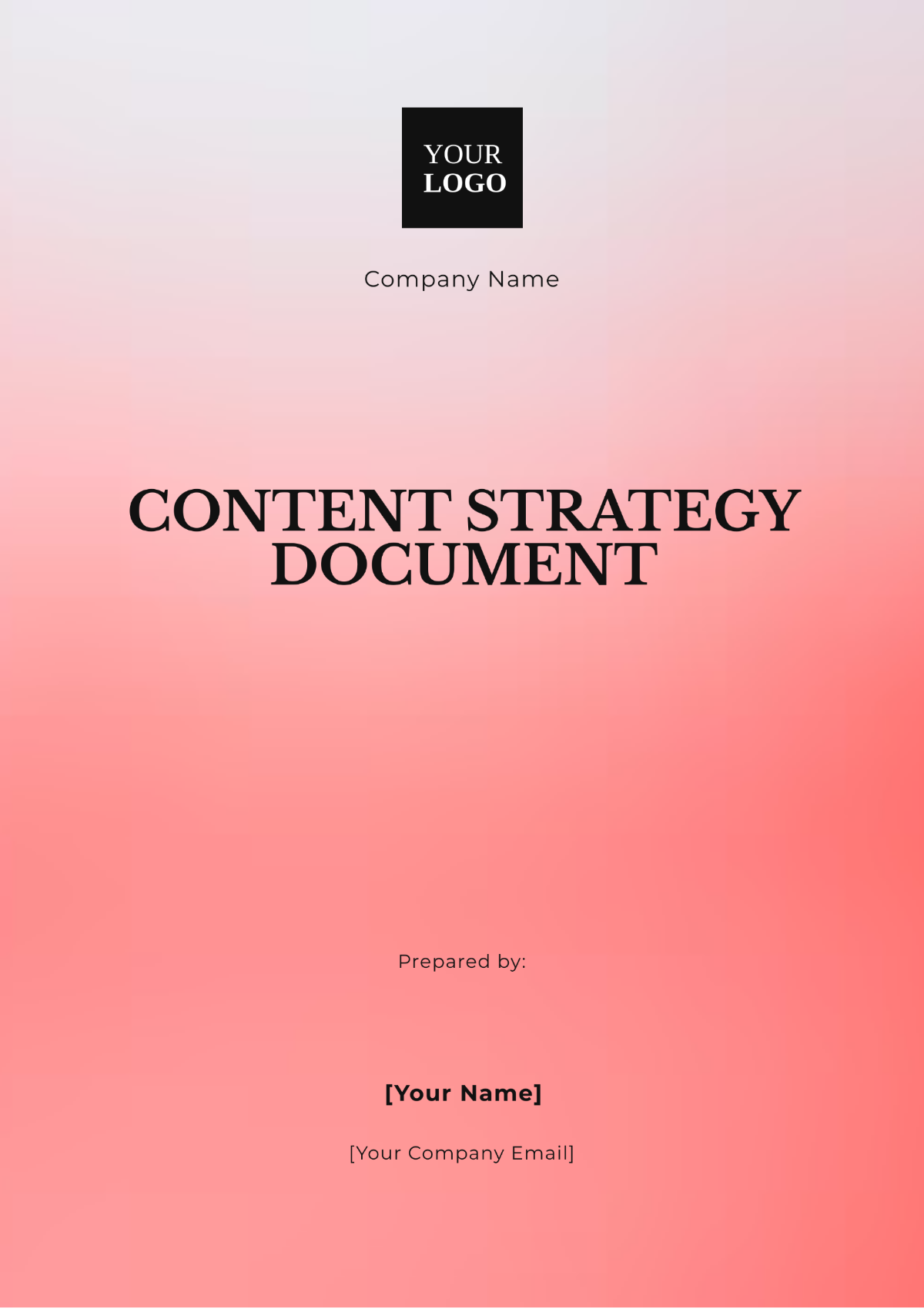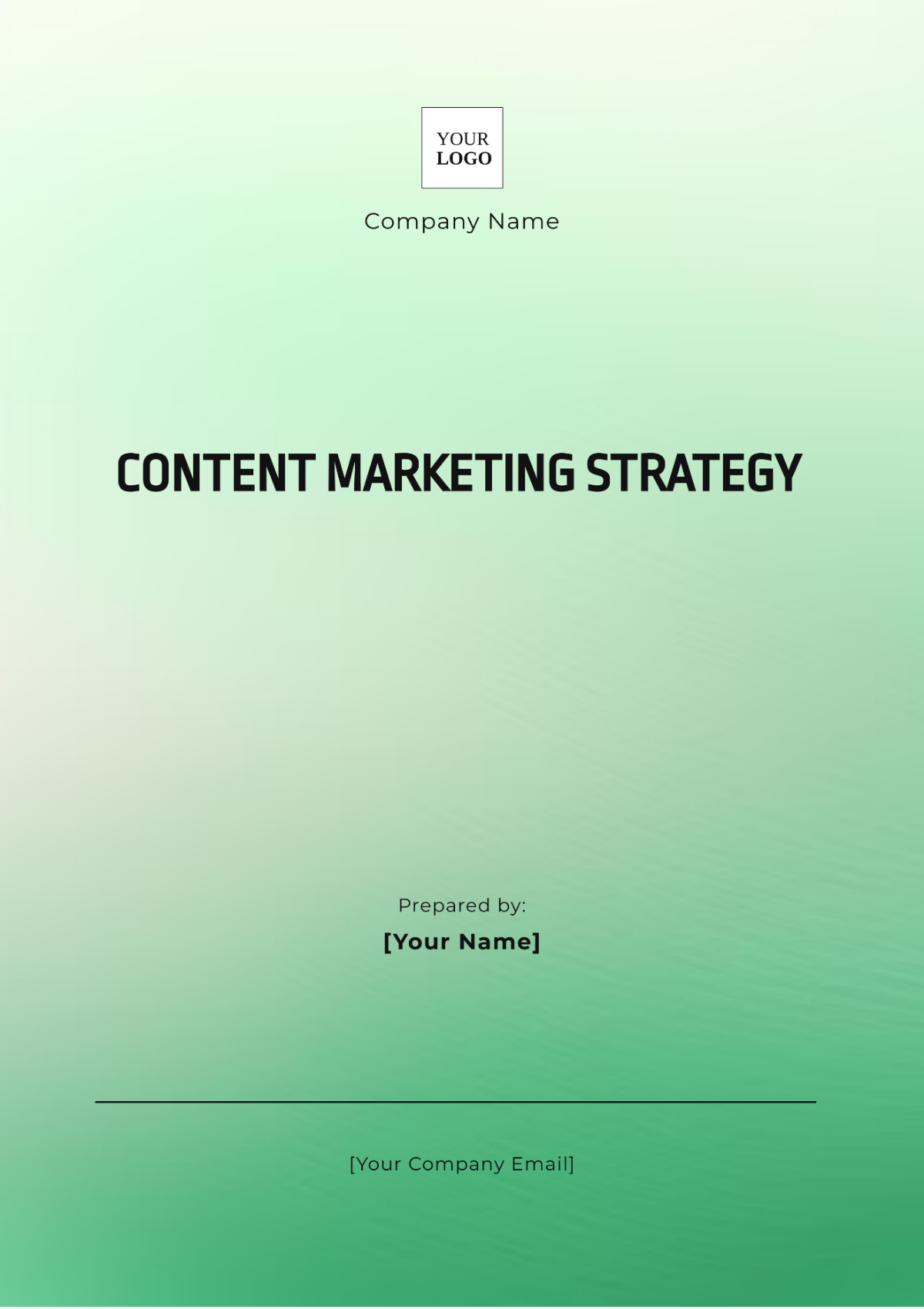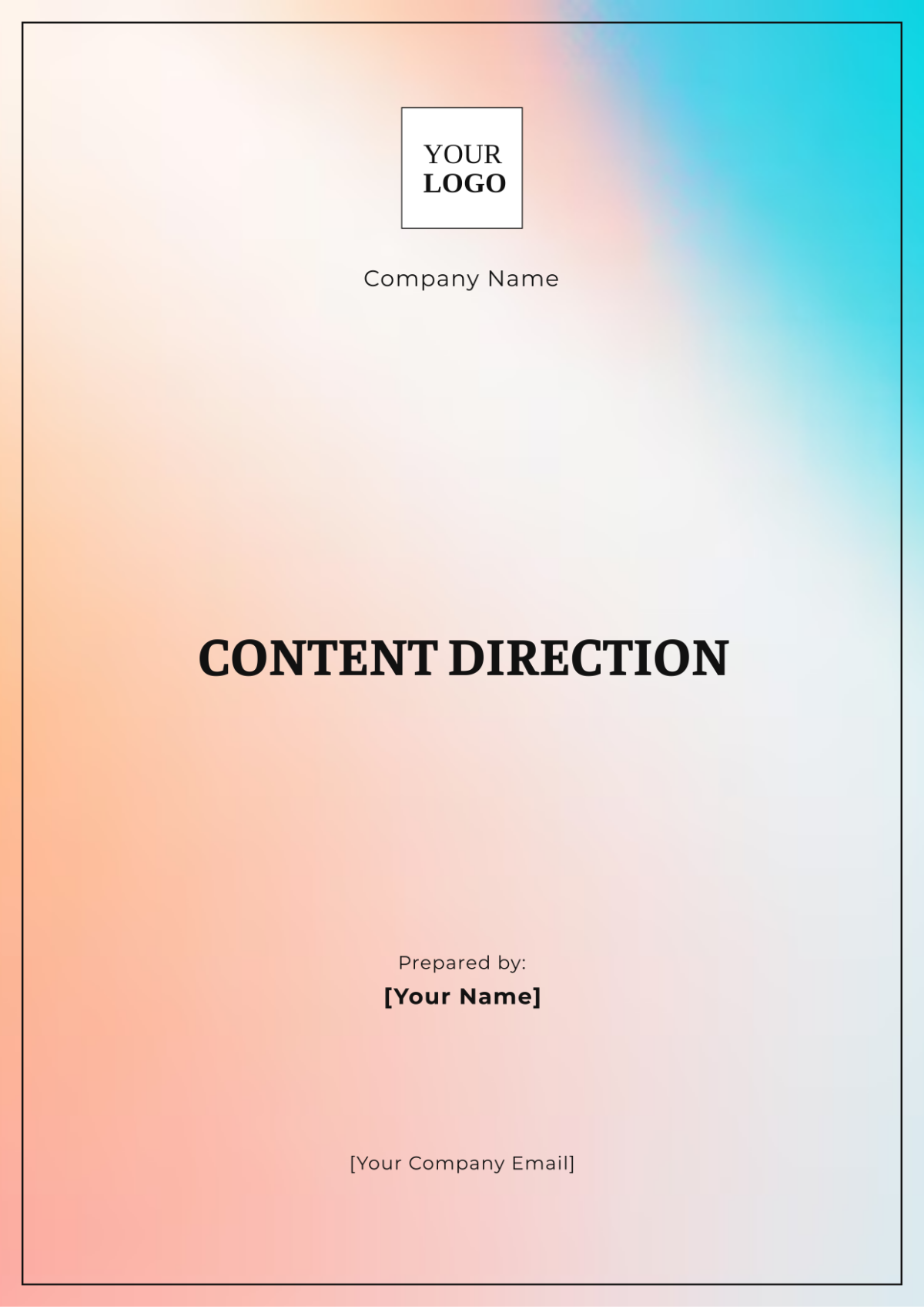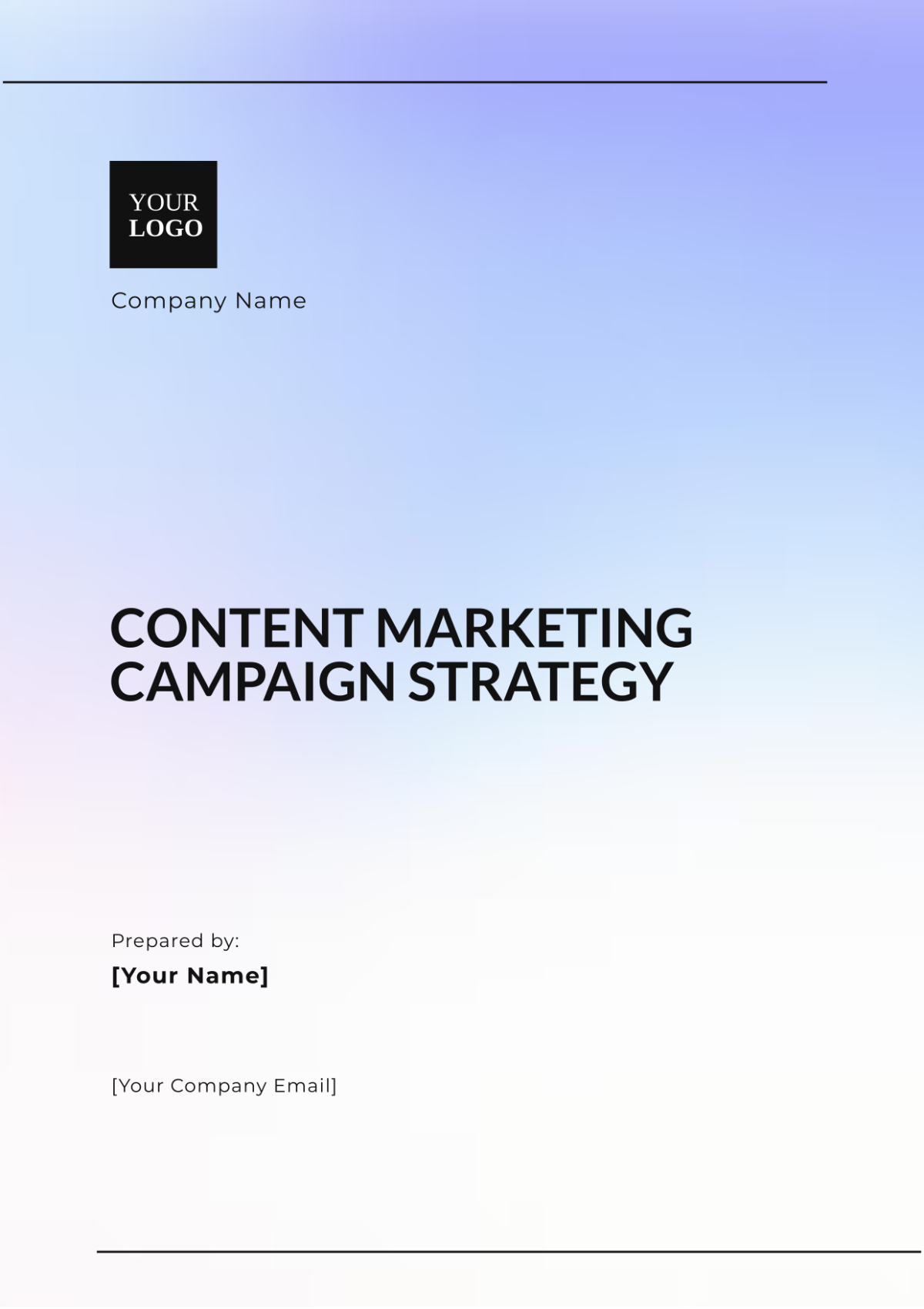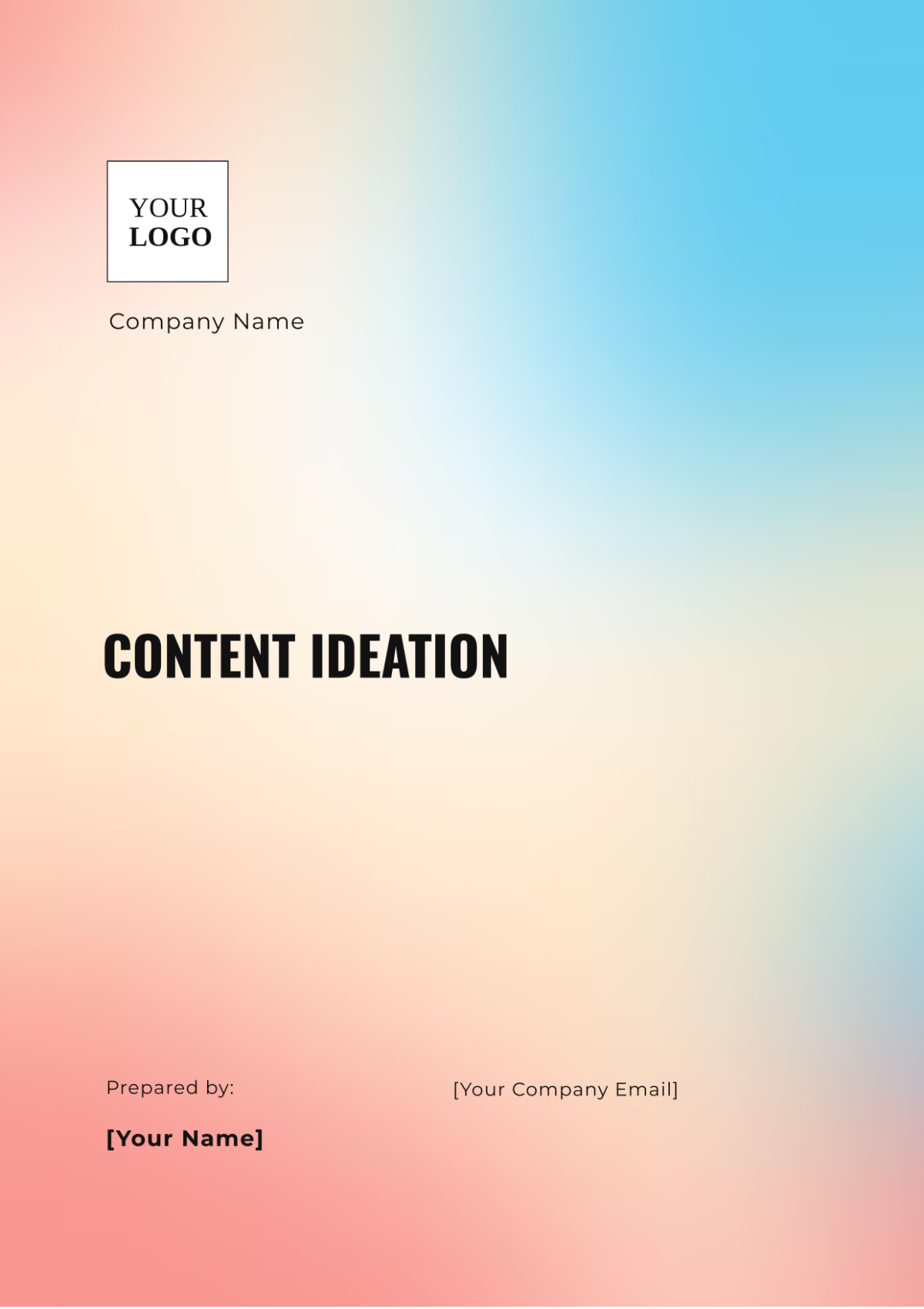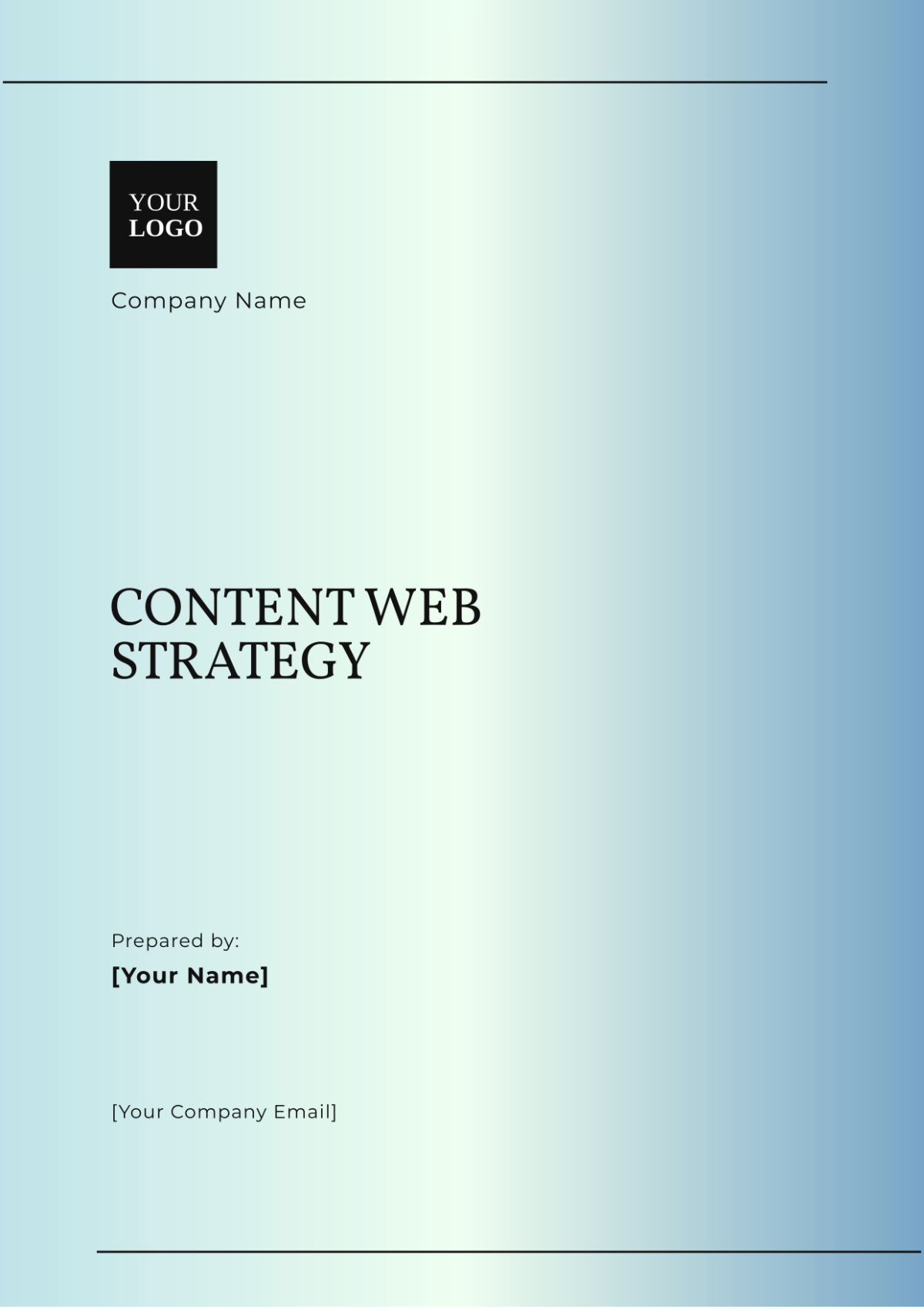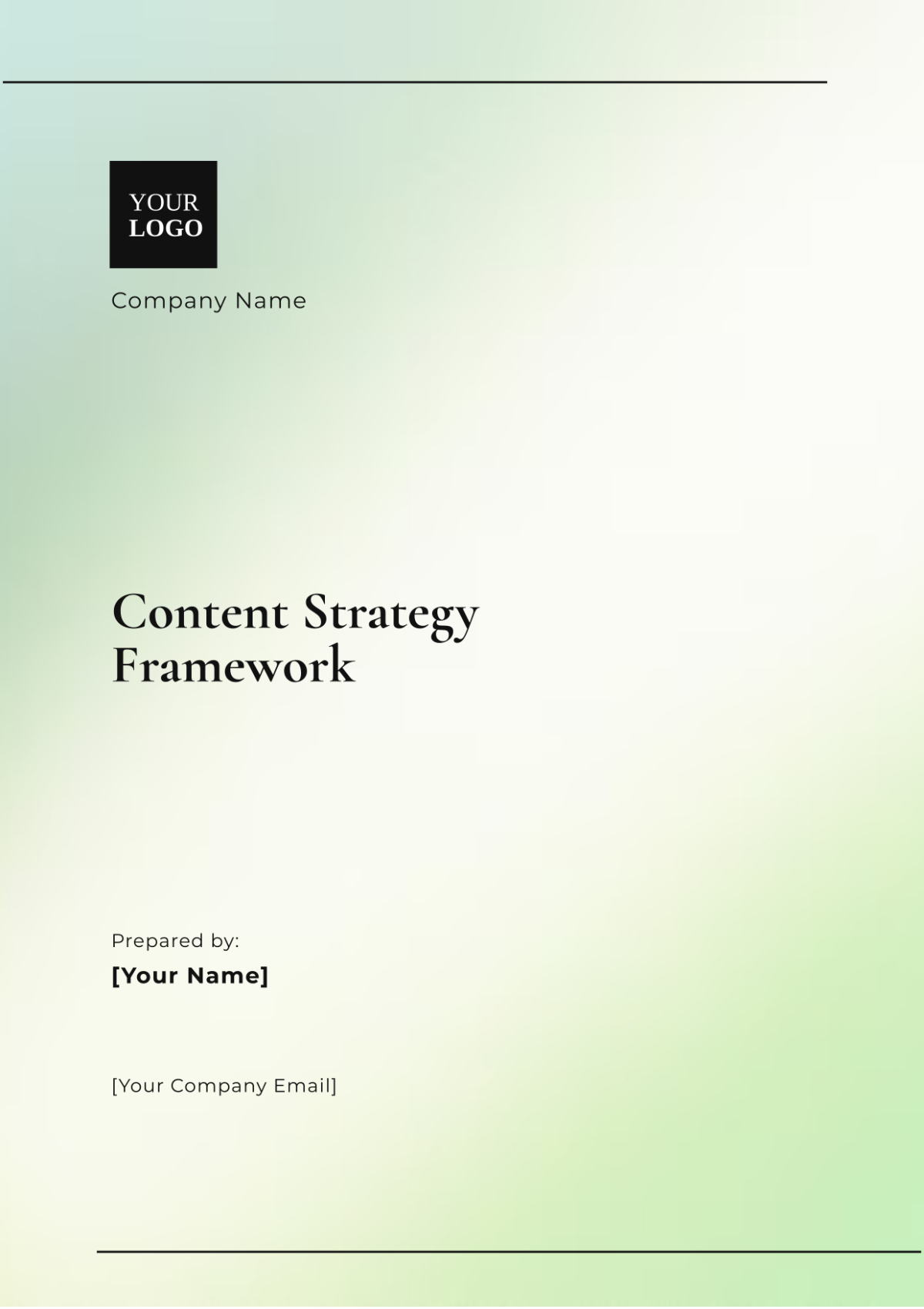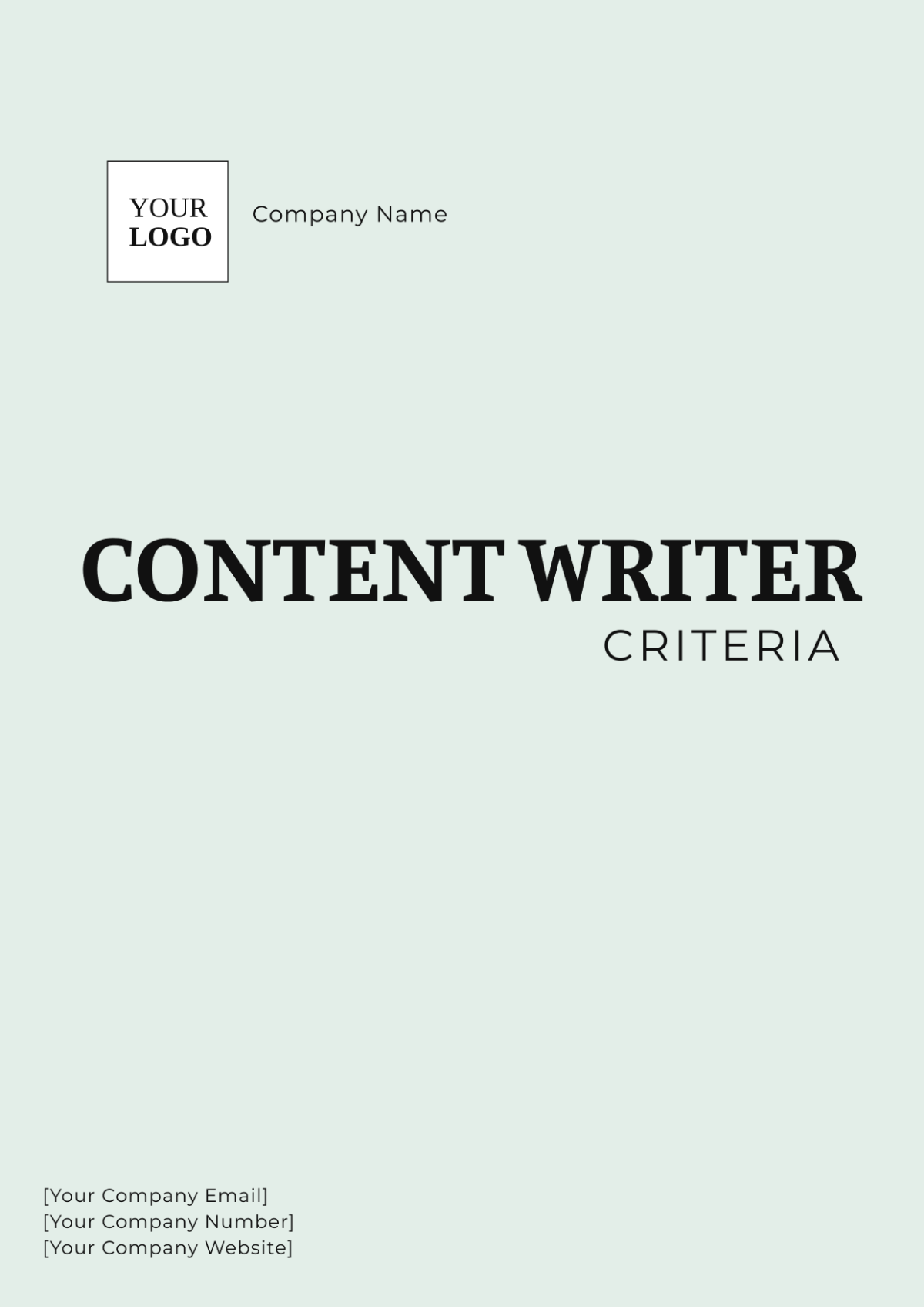Content Strategy Framework
Prepared by: [Your Name]
I. Introduction
A. Overview
This Content Strategy Framework is designed to enhance brand awareness and engagement for [Your Company Name]. It outlines the strategic approach for creating, managing, and optimizing content to achieve these objectives.
B. Company Information
Company Information | Details |
|---|---|
Company Name | [Your Company Name] |
[Your Company Email] | |
Address | [Your Company Address] |
Phone Number | [Your Company Number] |
Website | [Your Company Website] |
Social Media | [Your Company Social Media] |
II. Objectives
A. Primary Goals
Increase Brand Awareness: Enhance visibility and recognition of [Your Company Name] across target markets.
Boost Engagement: Foster higher levels of interaction and engagement with our content among the target audience.
B. Key Performance Indicators (KPIs)
Brand Awareness KPIs:
Website traffic growth by 25% within 6 months.
Social media follower increase by 30% within 6 months.
20% increase in branded search queries.
Engagement KPIs:
15% increase in social media engagement rates.
25% growth in average content shares and comments.
20% improvement in average time spent on content pages.
III. Audience Analysis
A. Target Audience Profiles
Young Professionals
Demographics: Aged 25-34, urban dwellers.
Interests: Career growth, tech trends, lifestyle.
Pain Points: Work-life balance, career advancement.
Preferred Content: Blog posts, infographics, webinars with actionable insights.
Small Business Owners
Demographics: Aged 35-50, suburban residents.
Interests: Business growth, management, marketing.
Pain Points: Budget constraints, time management.
Preferred Content: Case studies, eBooks, and success story podcasts.
B. Persona Development
Persona 1: Alex the Ambitious Professional
Age: 28
Occupation: Marketing Specialist
Goals: Career advancement, industry expertise
Challenges: Balancing professional and personal life
Content Preferences: Industry insights, professional development resources
Persona 2: Jamie the Small Business Owner
Age: 42
Occupation: Owner of a local retail store
Goals: Business expansion, customer engagement
Challenges: Limited budget, marketing efficiency
Content Preferences: Success stories, practical tips, budget-friendly strategies
IV. Content Plan
A. Content Types and Themes
Content Type | Description | Frequency | Objective |
|---|---|---|---|
Blog Posts | In-depth articles on industry trends, tips, and case studies | 2 per week | Educate, drive organic traffic |
Infographics | Visual representations of data and insights | 1 per month | Engage, simplify complex information |
Webinars | Live or recorded sessions with industry experts | 1 per quarter | Generate leads, provide value |
Social Media Posts | Short-form content for engagement and updates | Daily | Increase visibility, drive interaction |
B. Content Calendar
August:
Blog Post: Title: “Top Marketing Trends for 2054”
Publication Date: August 10
Responsible Person: Content Creator
Infographic: Title: “The Impact of Digital Marketing”
Publication Date: August 20
Responsible Person: Graphic Designer
September:
Webinar: Title: “Maximizing Your Social Media ROI”
Publication Date: September 15
Responsible Person: Webinar Host
Social Media Posts: Title: Weekly series "Marketing Tips & Tricks"
Frequency: Every Monday
Responsible Person: Social Media Manager
V. Content Distribution
A. Channels
Website: Central hub for blog posts, eBooks, and resources.
Social Media: Platforms including Facebook, LinkedIn, Twitter, and Instagram for engagement and promotion.
Email Marketing: Newsletters and targeted email campaigns to nurture leads and provide updates.
Partnerships: Collaborations with influencers and industry partners for extended reach.
B. Distribution Strategy
Website: Regular updates and optimization for SEO.
Social Media: Scheduled posts with engagement-focused strategies.
Email Marketing: Segmented lists and personalized content.
Partnerships: Co-branded content and cross-promotional activities.
VI. Analytics and Optimization
A. Measurement Tools
Google Analytics: Track website traffic, user behavior, and content performance.
Social Media Analytics: Measure engagement, reach, and follower growth.
Email Marketing Platforms: Track engagement metrics.
B. Review and Adjustment
Monthly Reviews: Adjust strategies using performance metrics insights.
Quarterly Reports: Analysis of strategy effectiveness and ROI.
VII. Budget and Resources
A. Budget Allocation
Category | Estimated Budget | Description |
|---|---|---|
Content Creation | $5,000 per month | Includes writers, designers, and tools |
Social Media Advertising | $2,000 per month | Paid promotions and ads |
Email Marketing Tools | $500 per month | Email platform subscriptions |
Webinars and Events | $1,500 per quarter | Hosting and promotional costs |
B. Resource Requirements
Content Creators: Writers, graphic designers, and video producers.
Marketing Team: Social media managers, SEO specialists, and email marketers.
Tools: CMS, social media schedulers, and analytics tools.
VIII. Conclusion
This Content Strategy Framework provides a comprehensive plan to drive brand awareness and engagement for [Your Company Name]. By following the outlined objectives, content plan, and distribution strategies, we aim to achieve significant growth in brand visibility and audience interaction.
For further information or questions, please contact:
Email: [Your Email]
